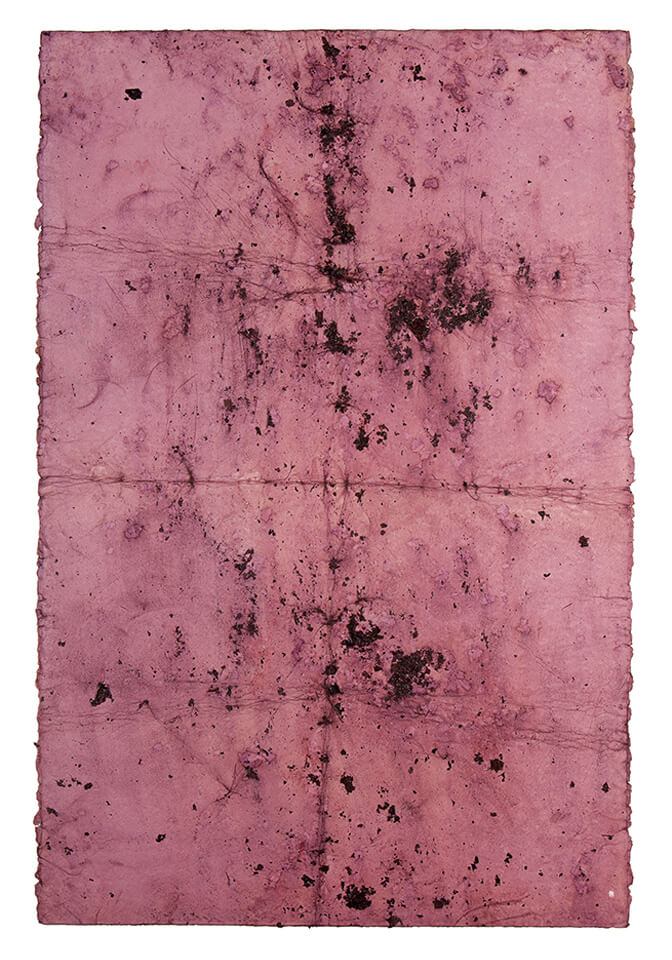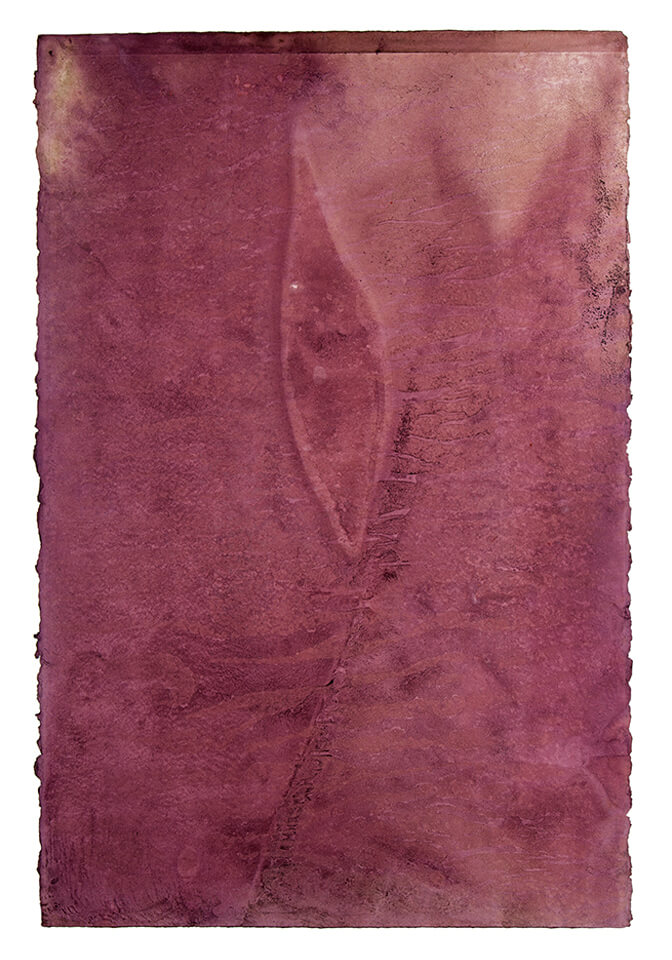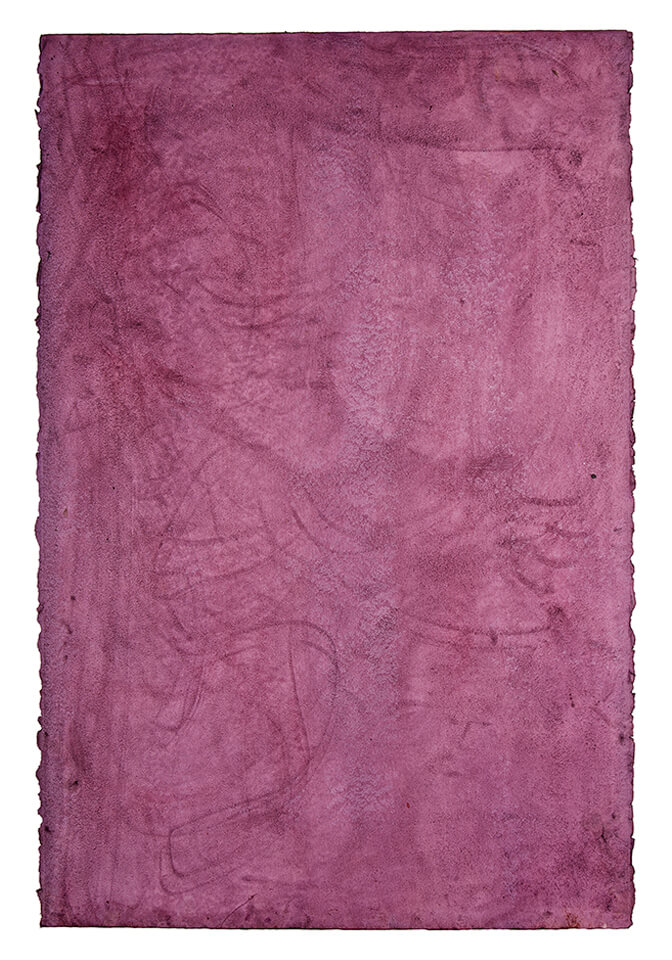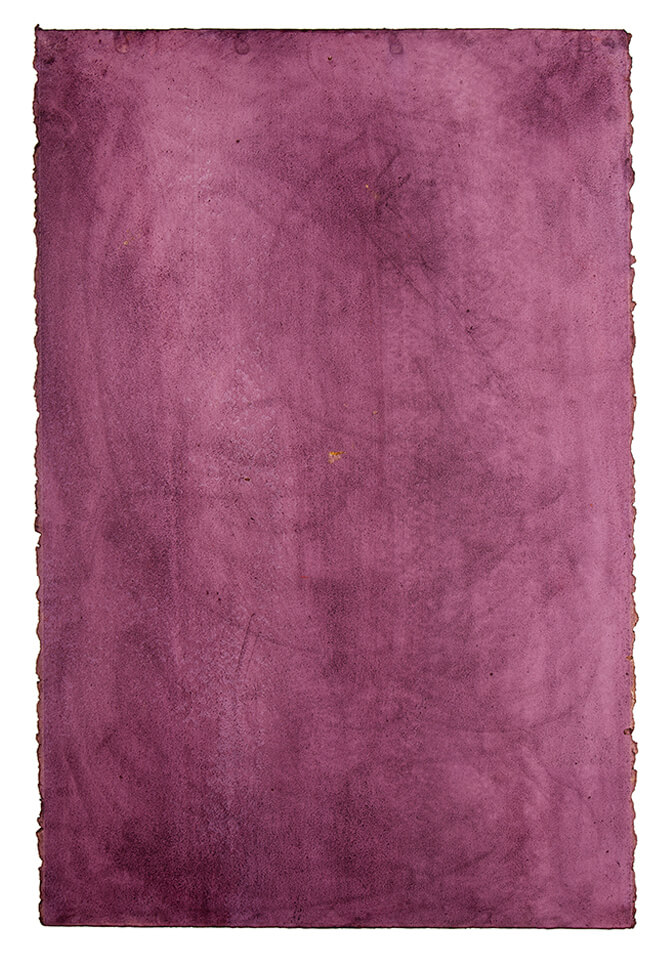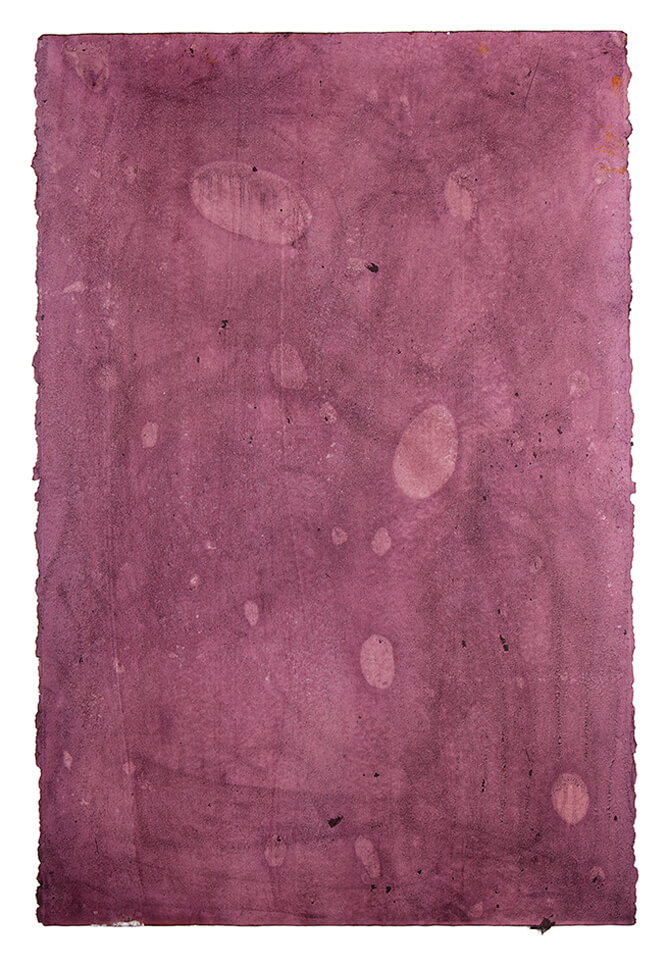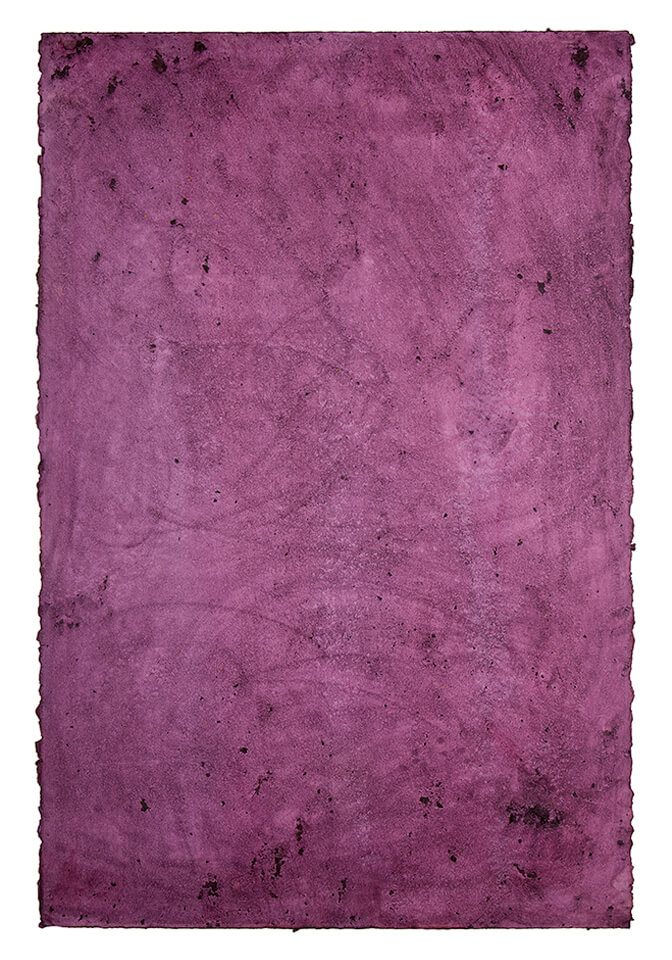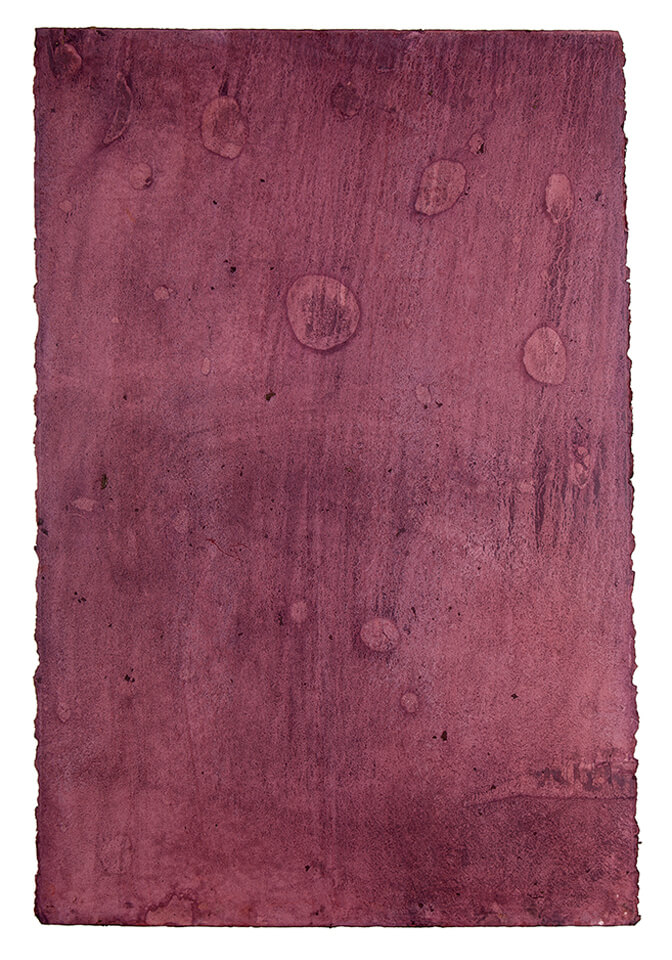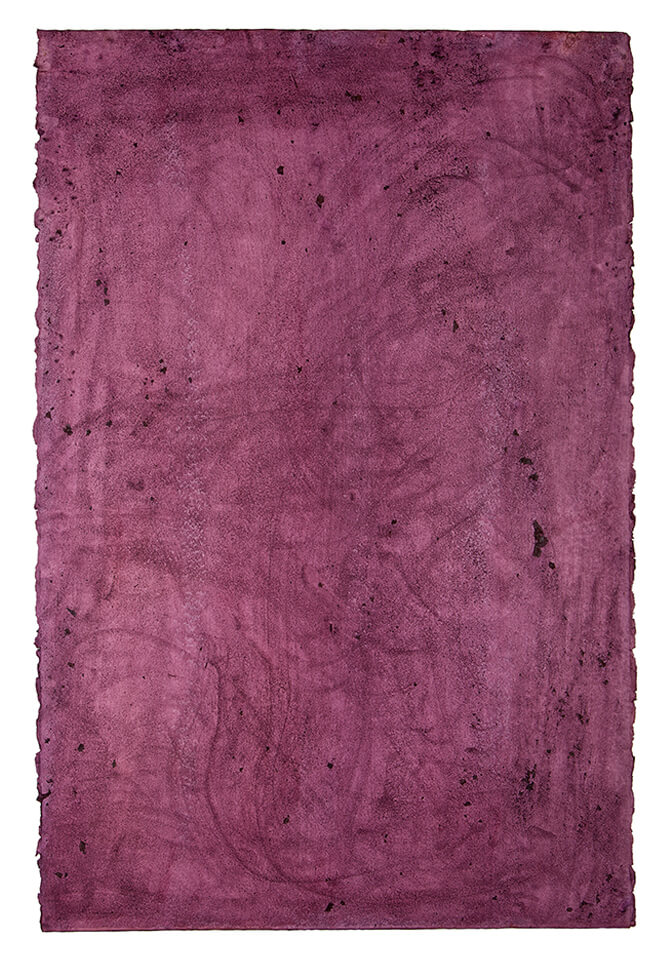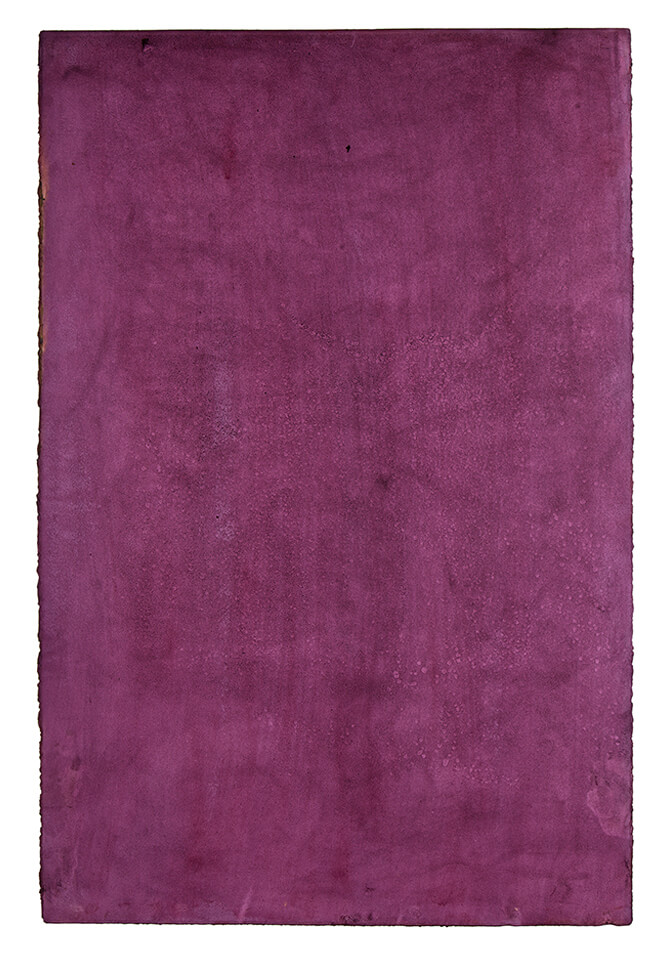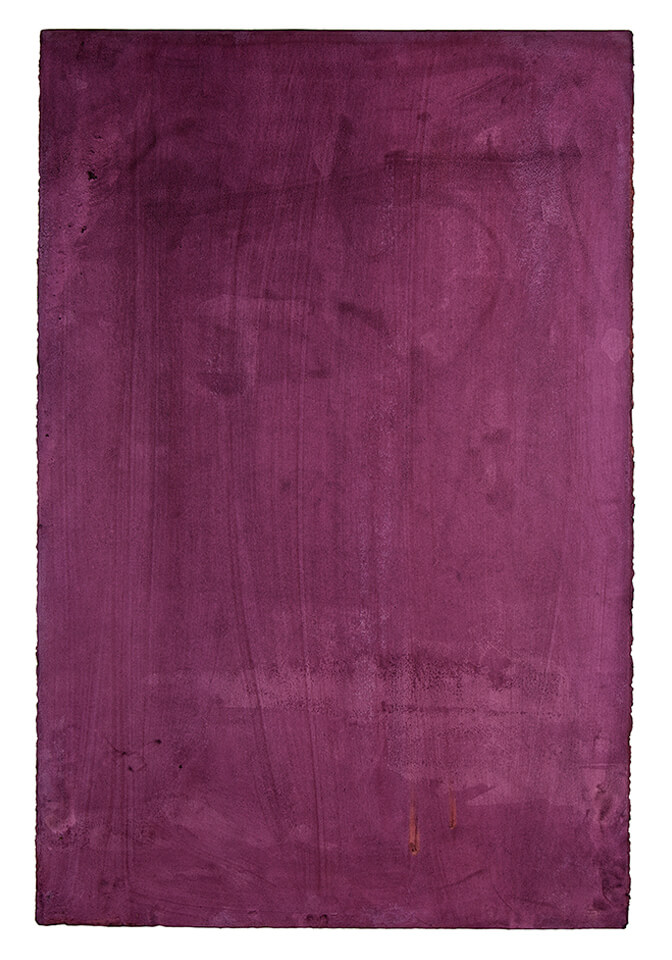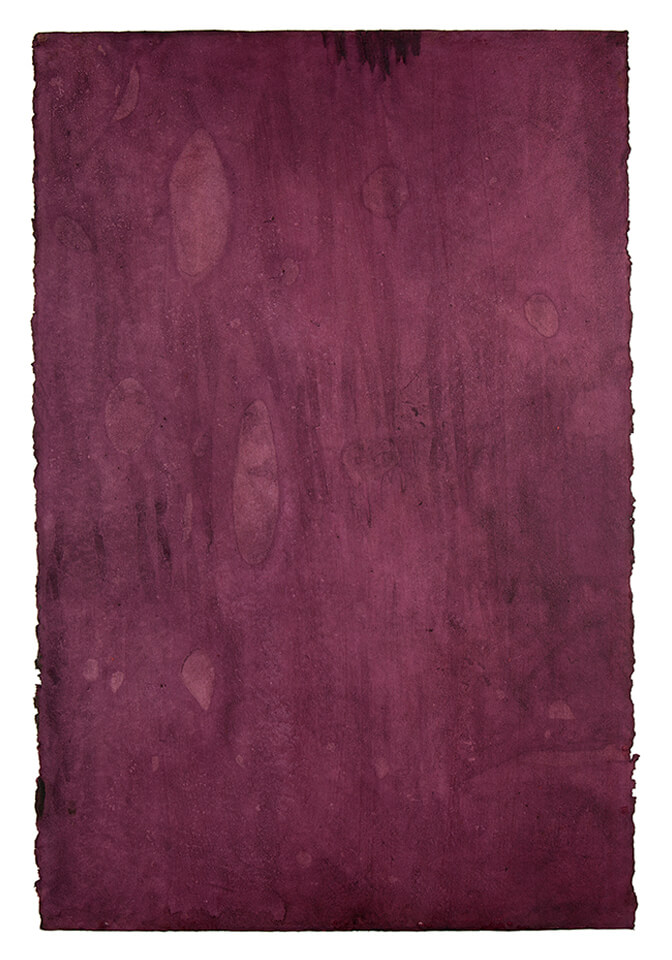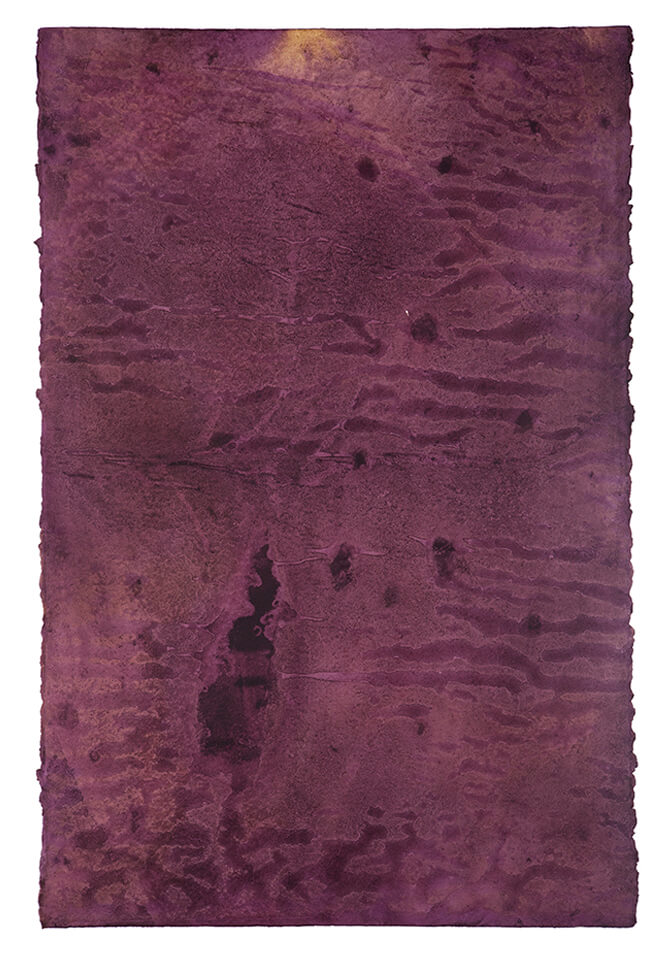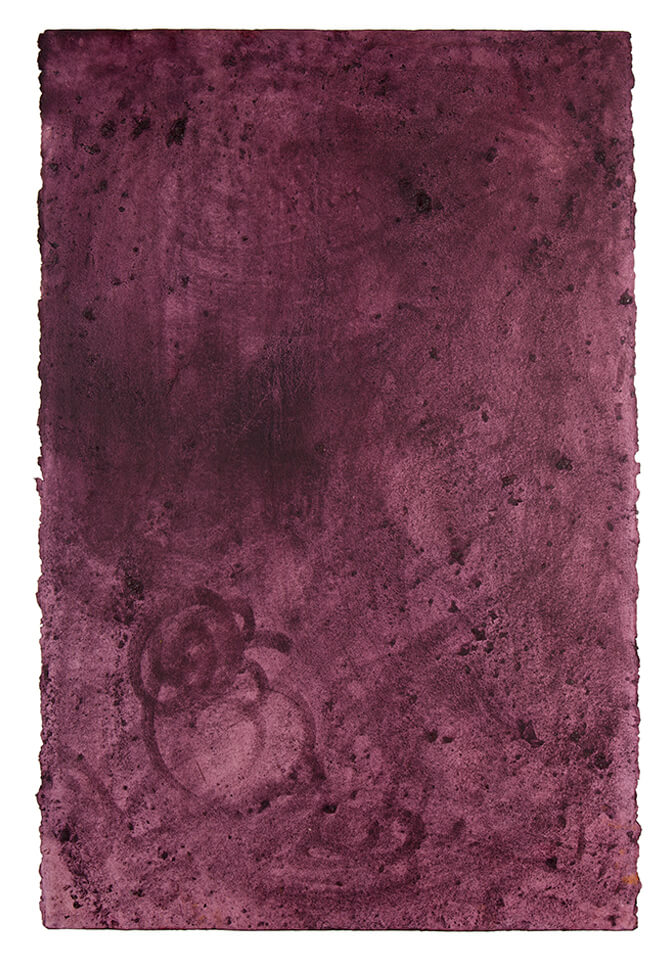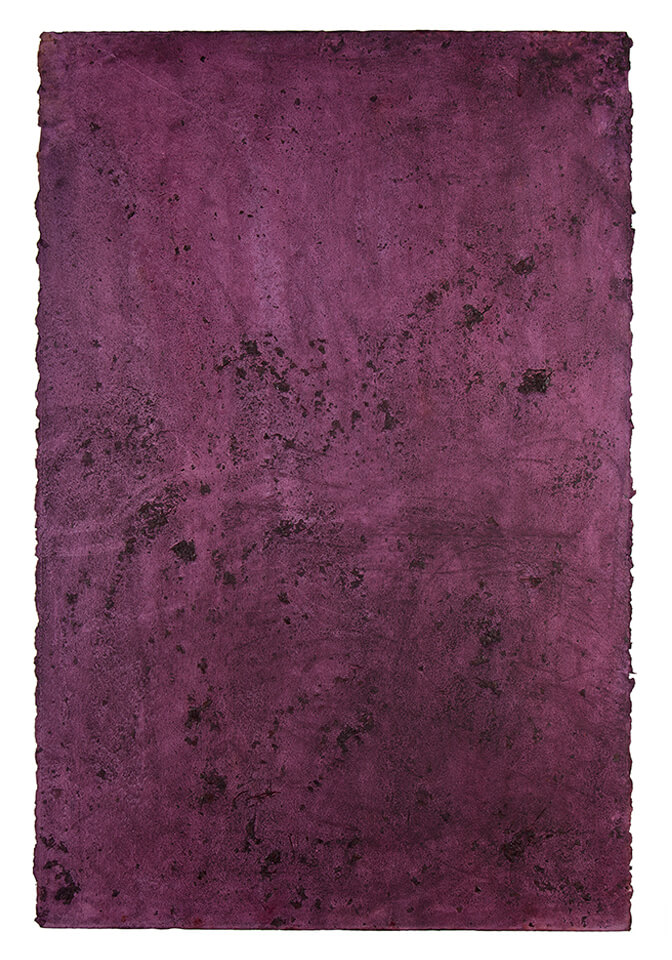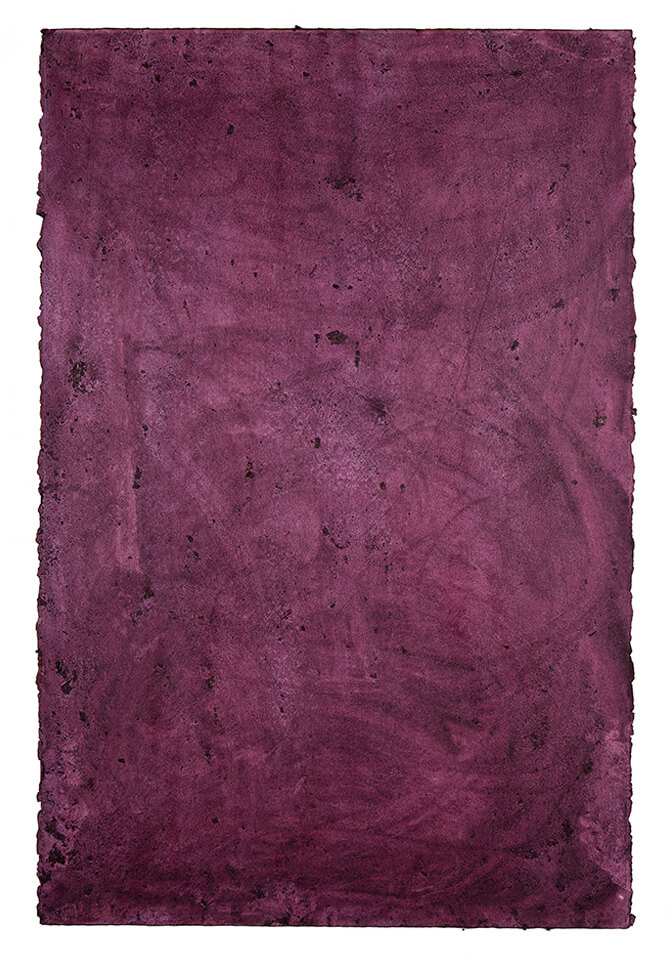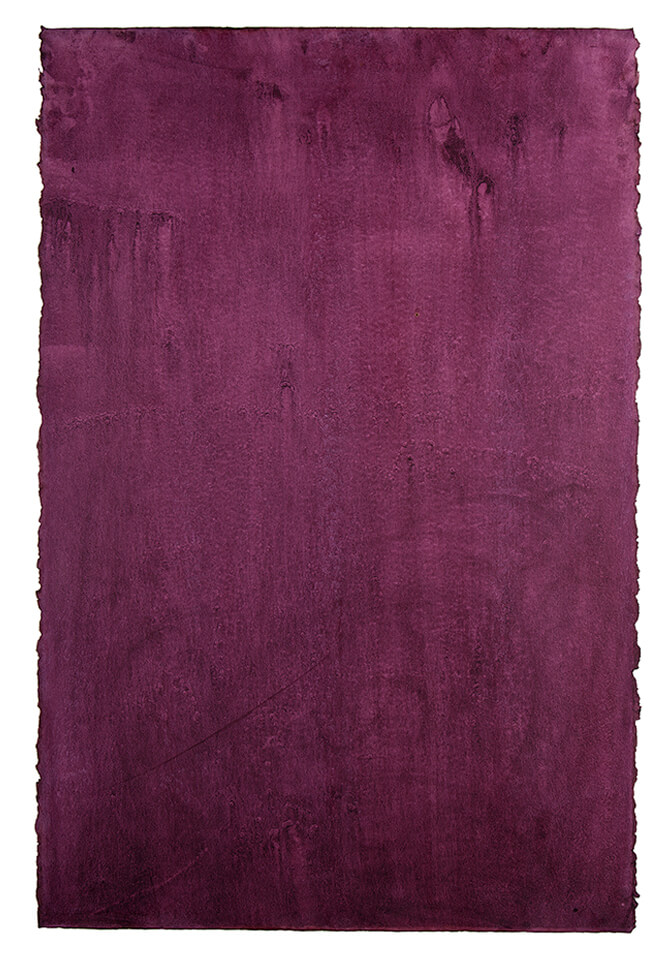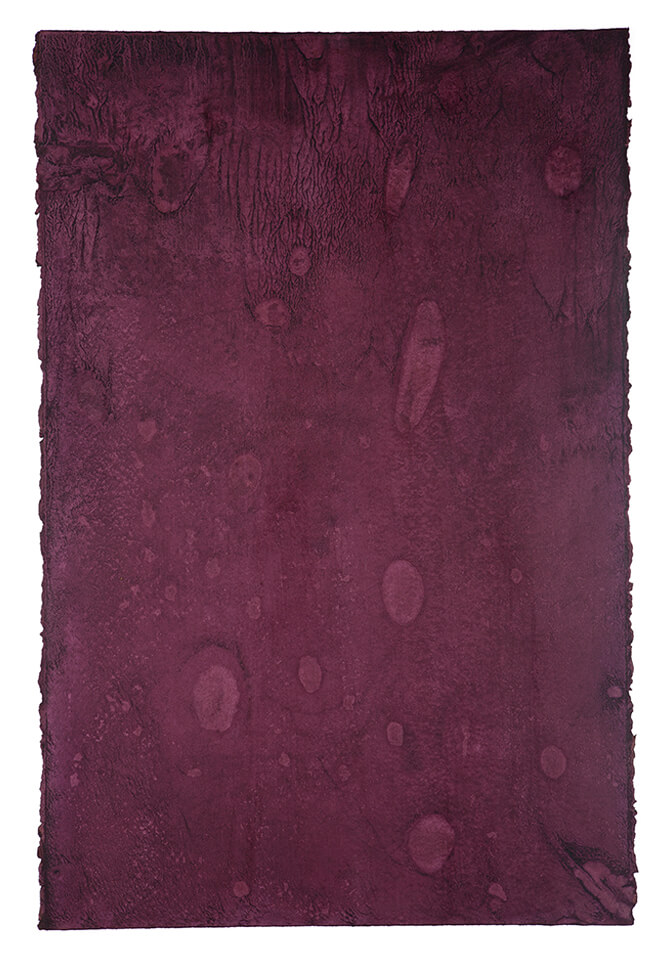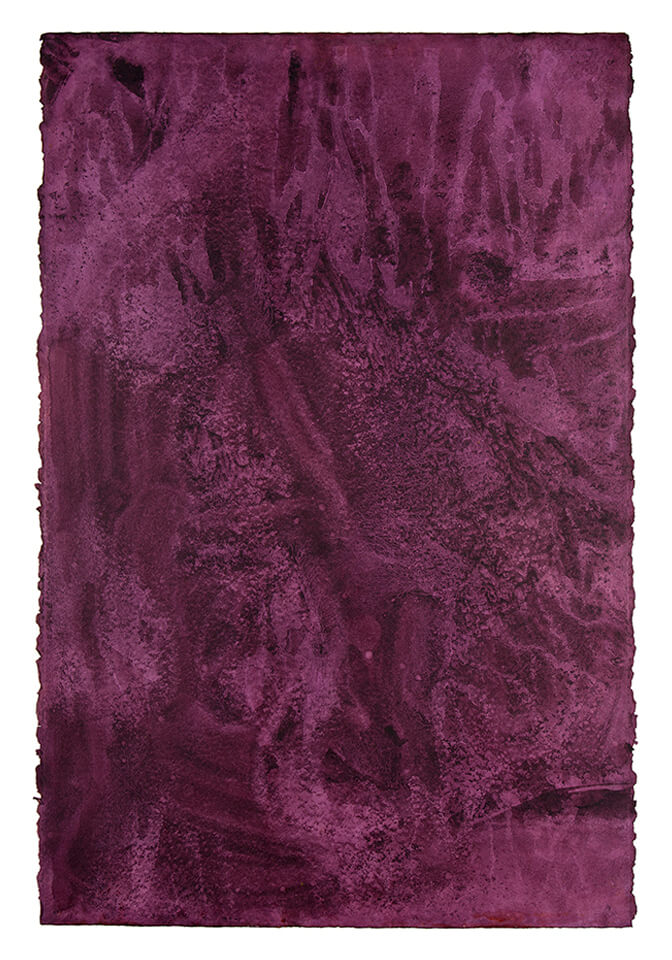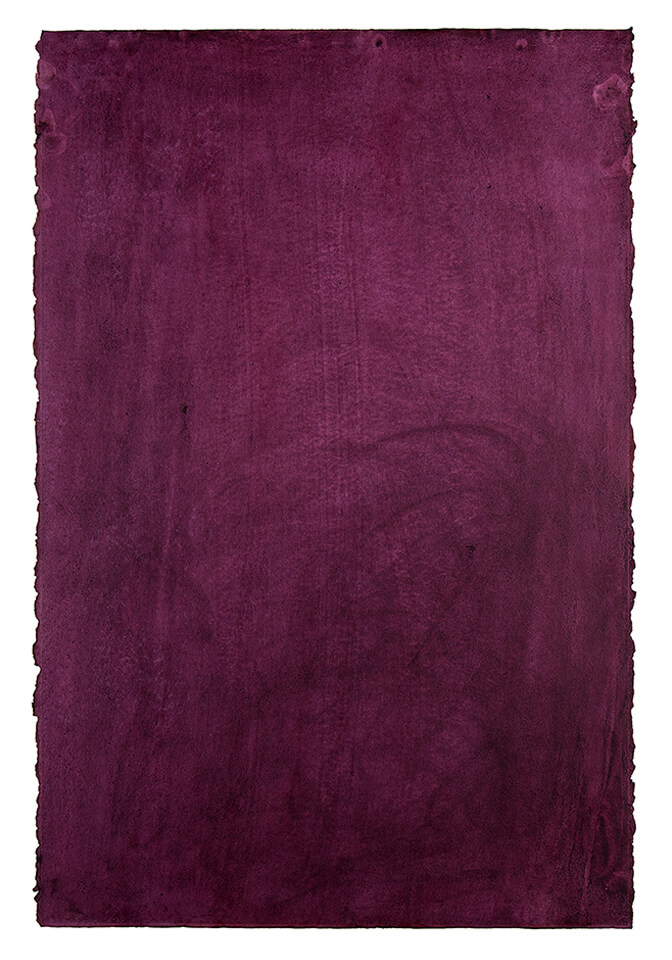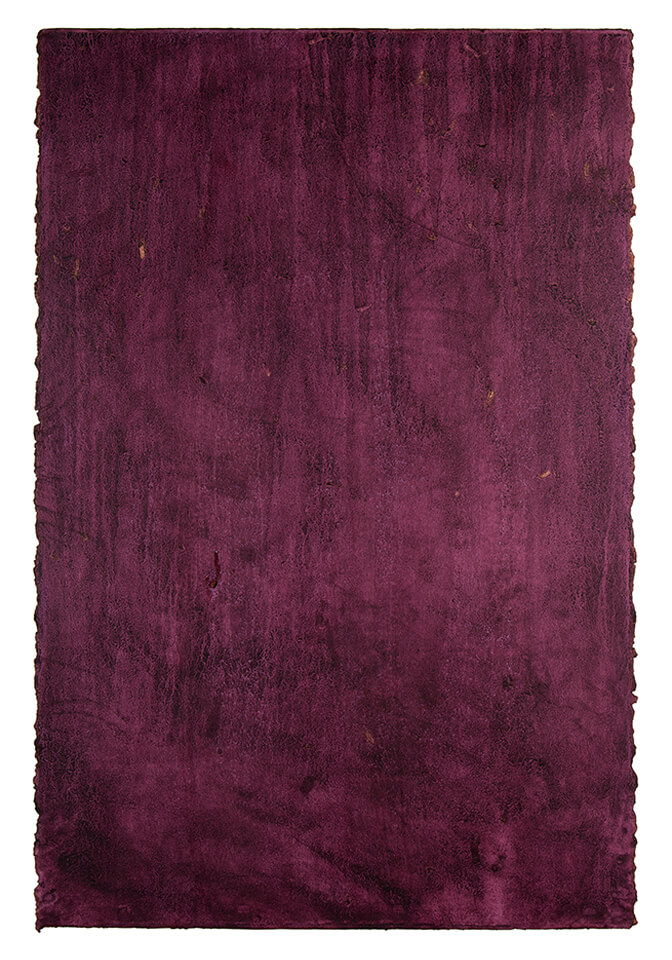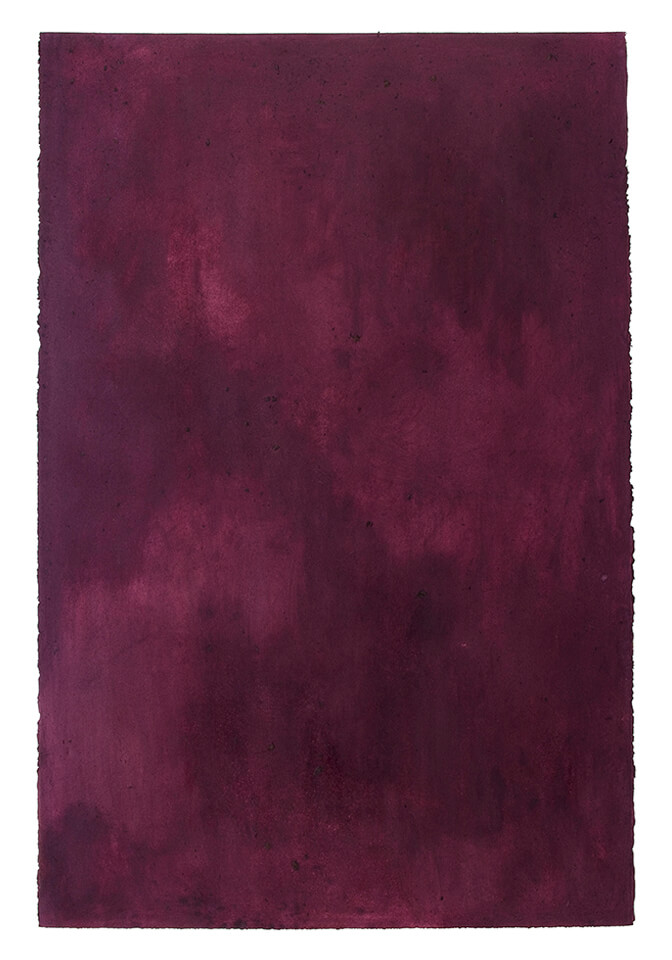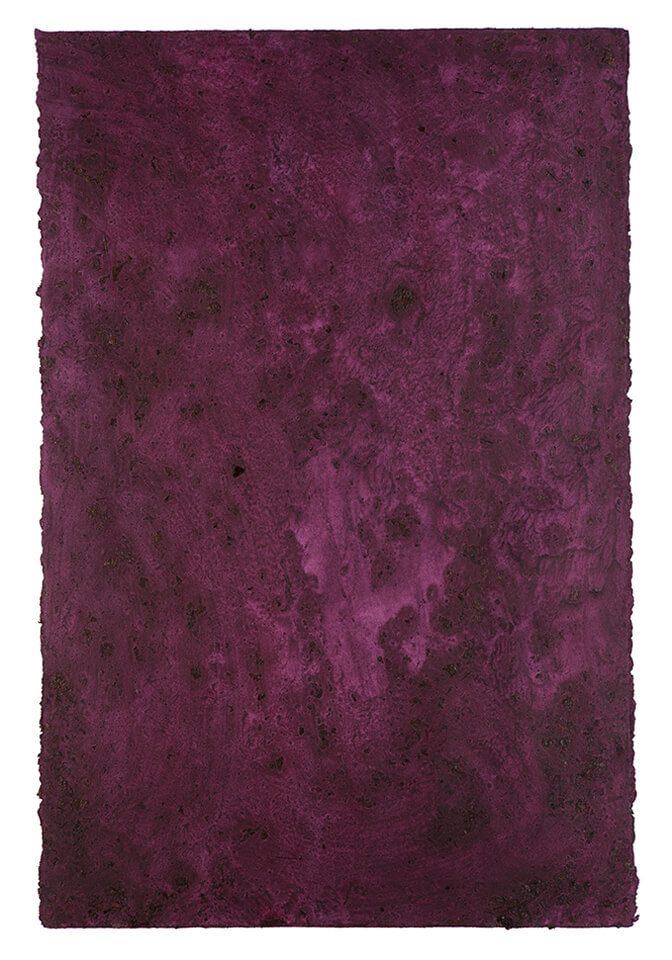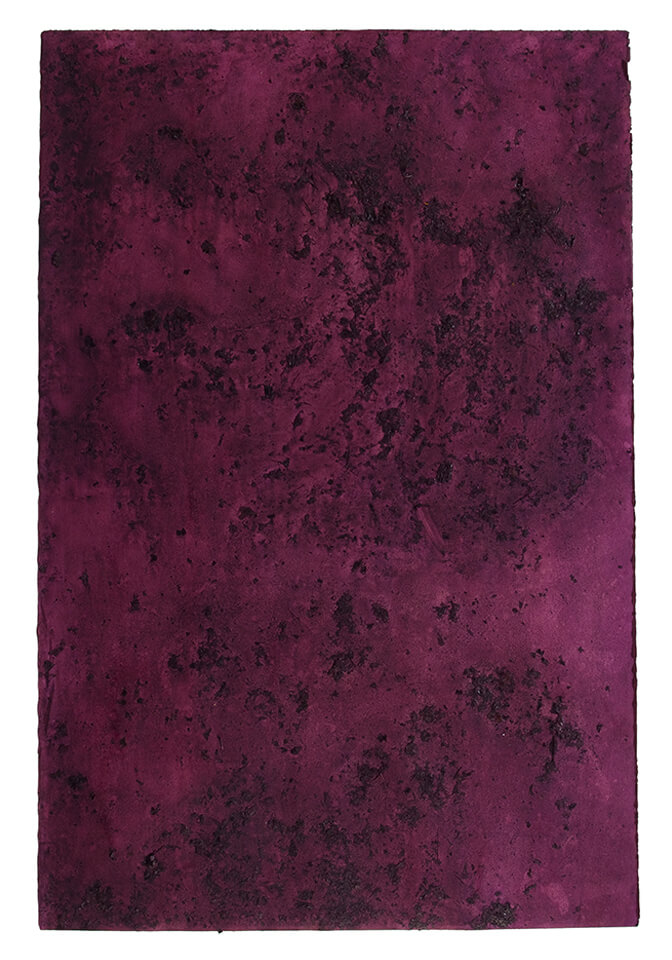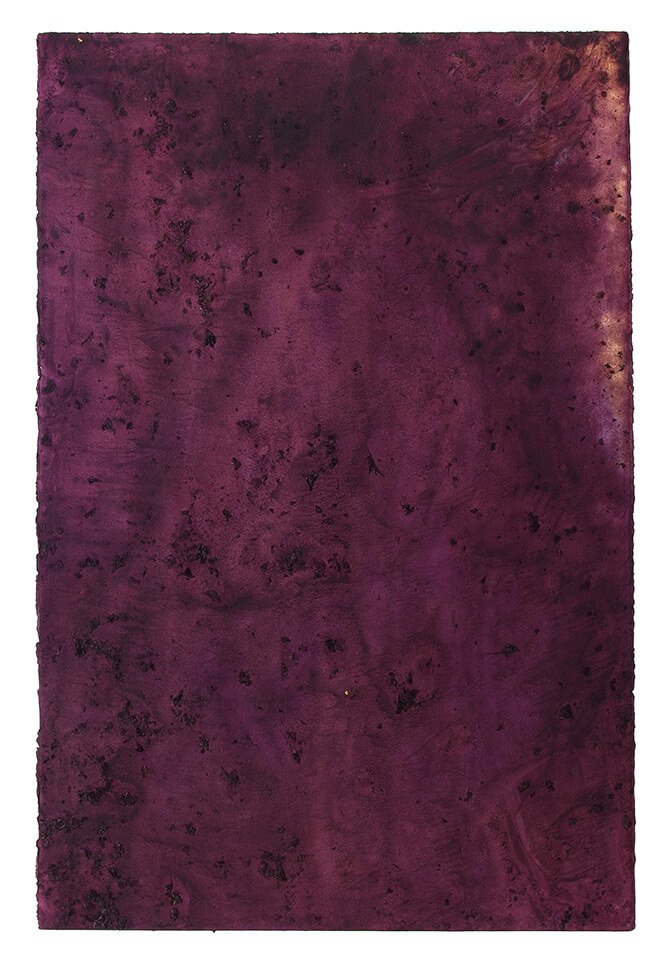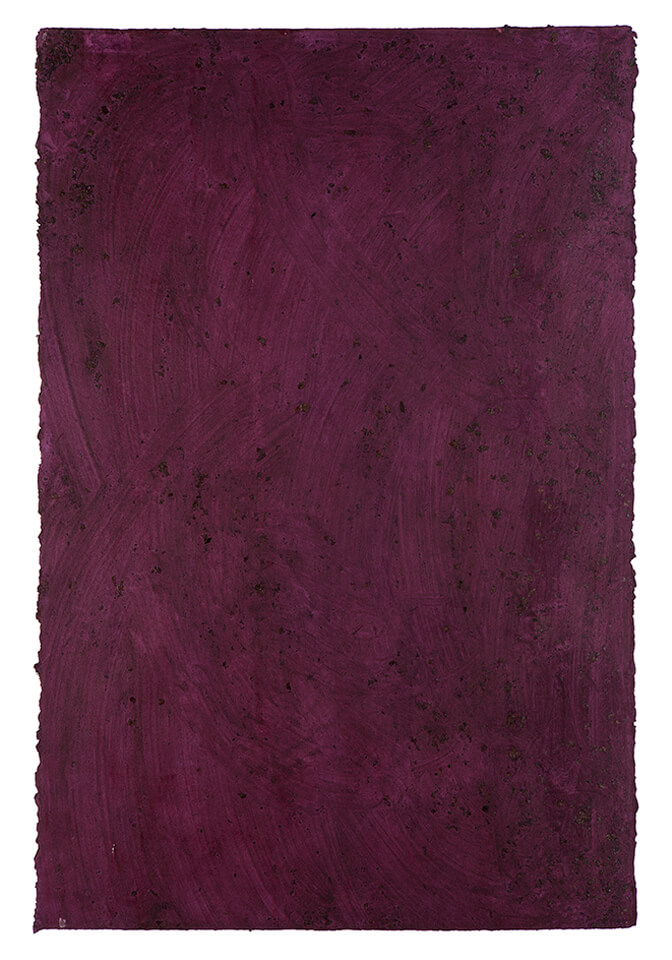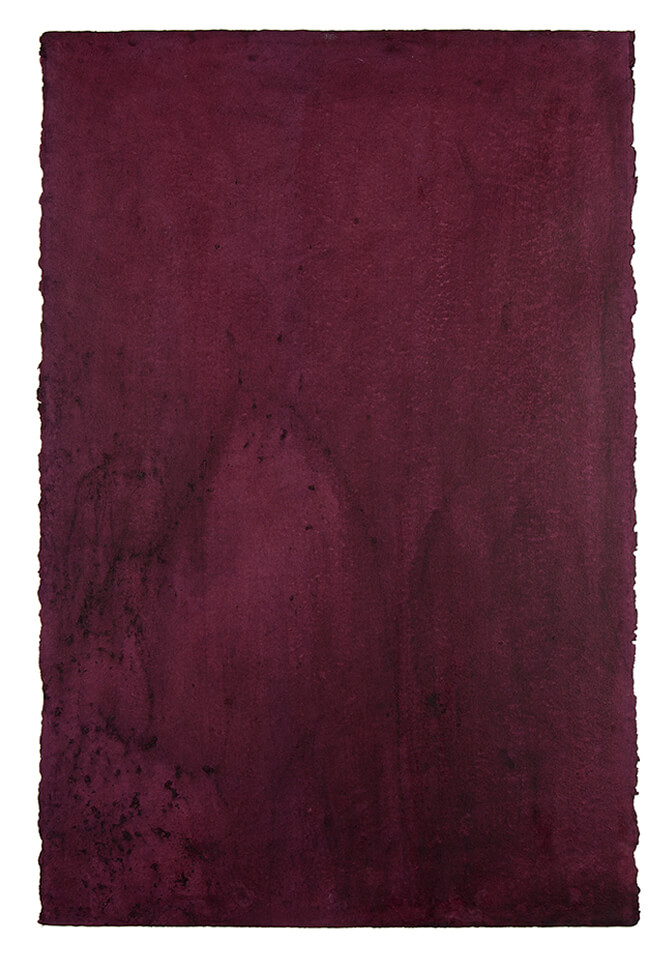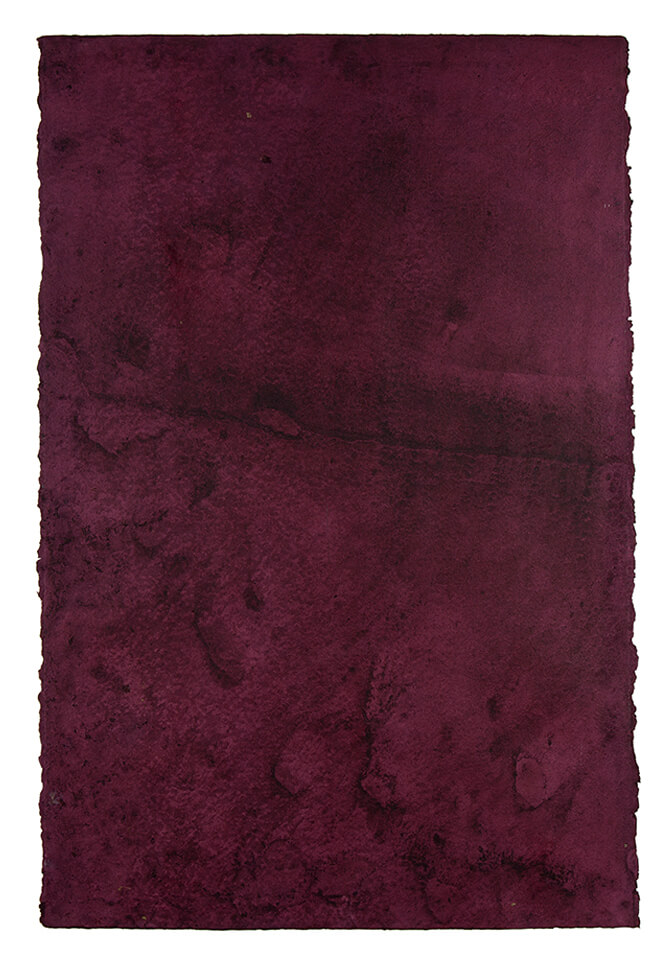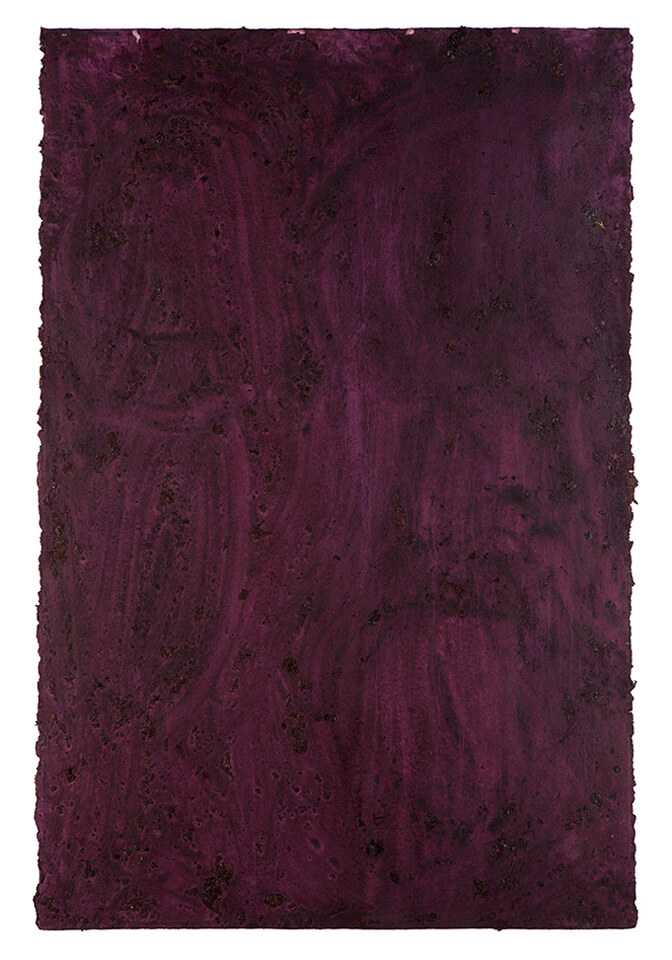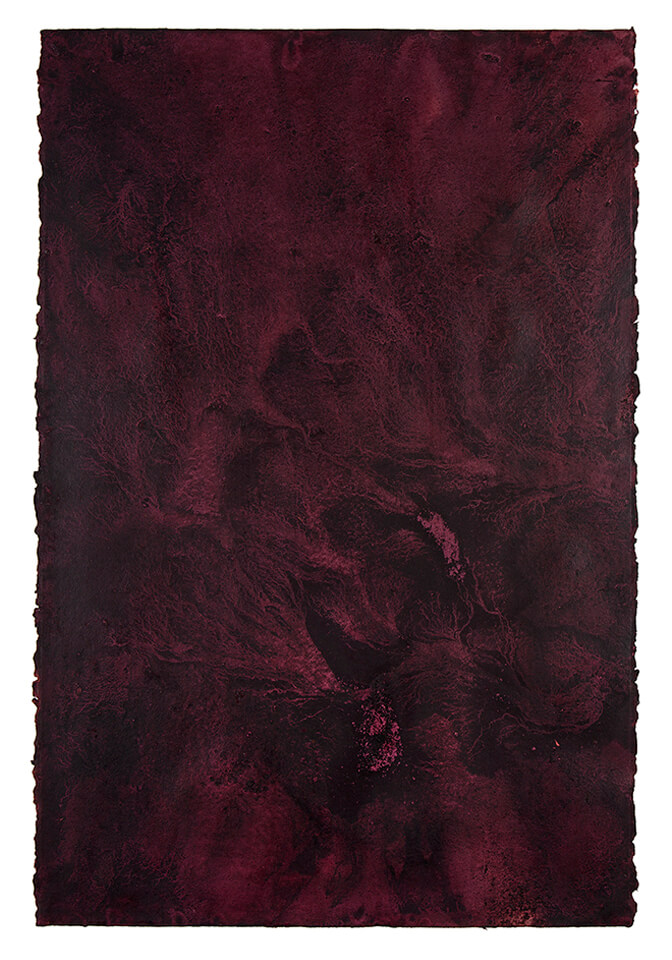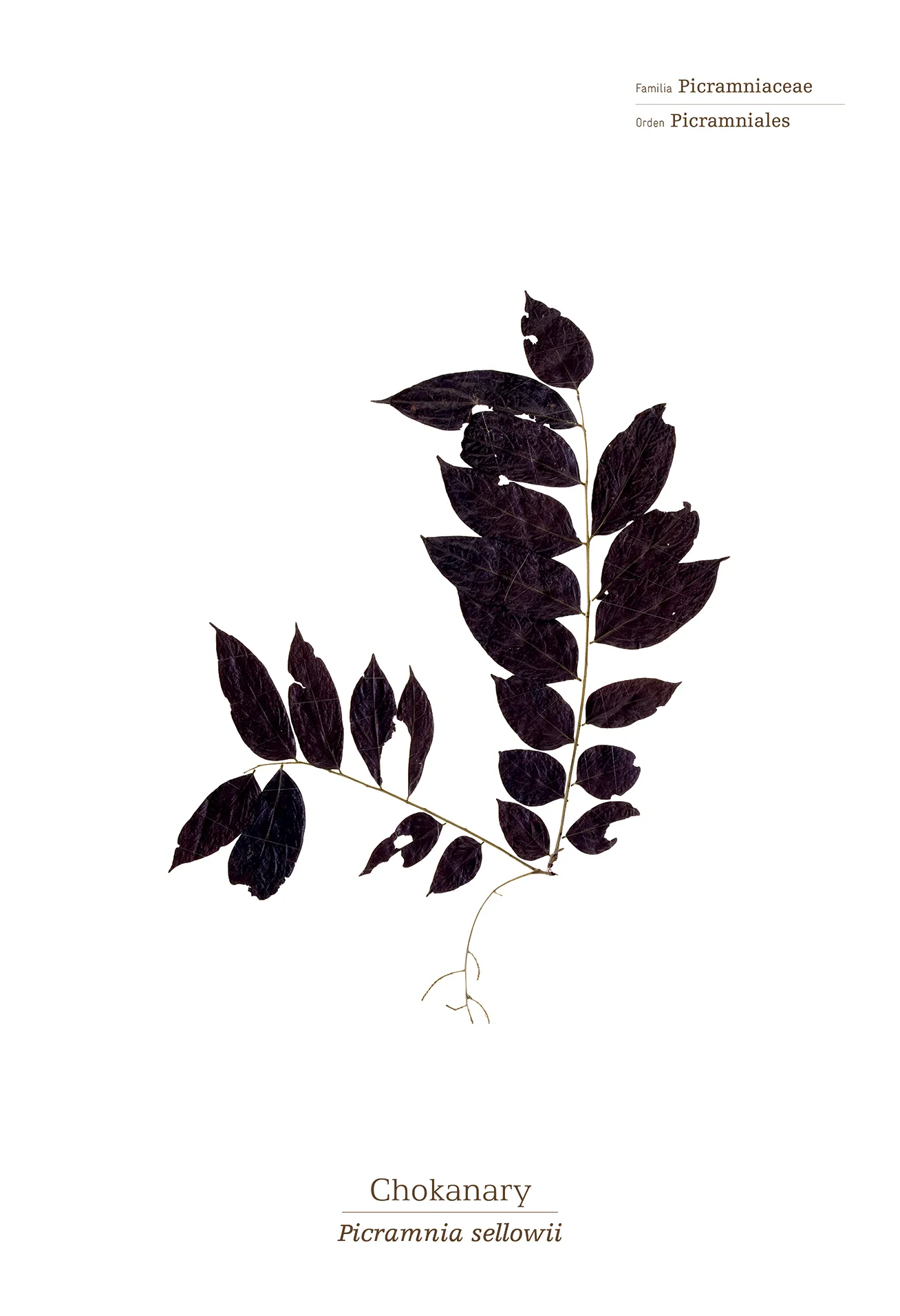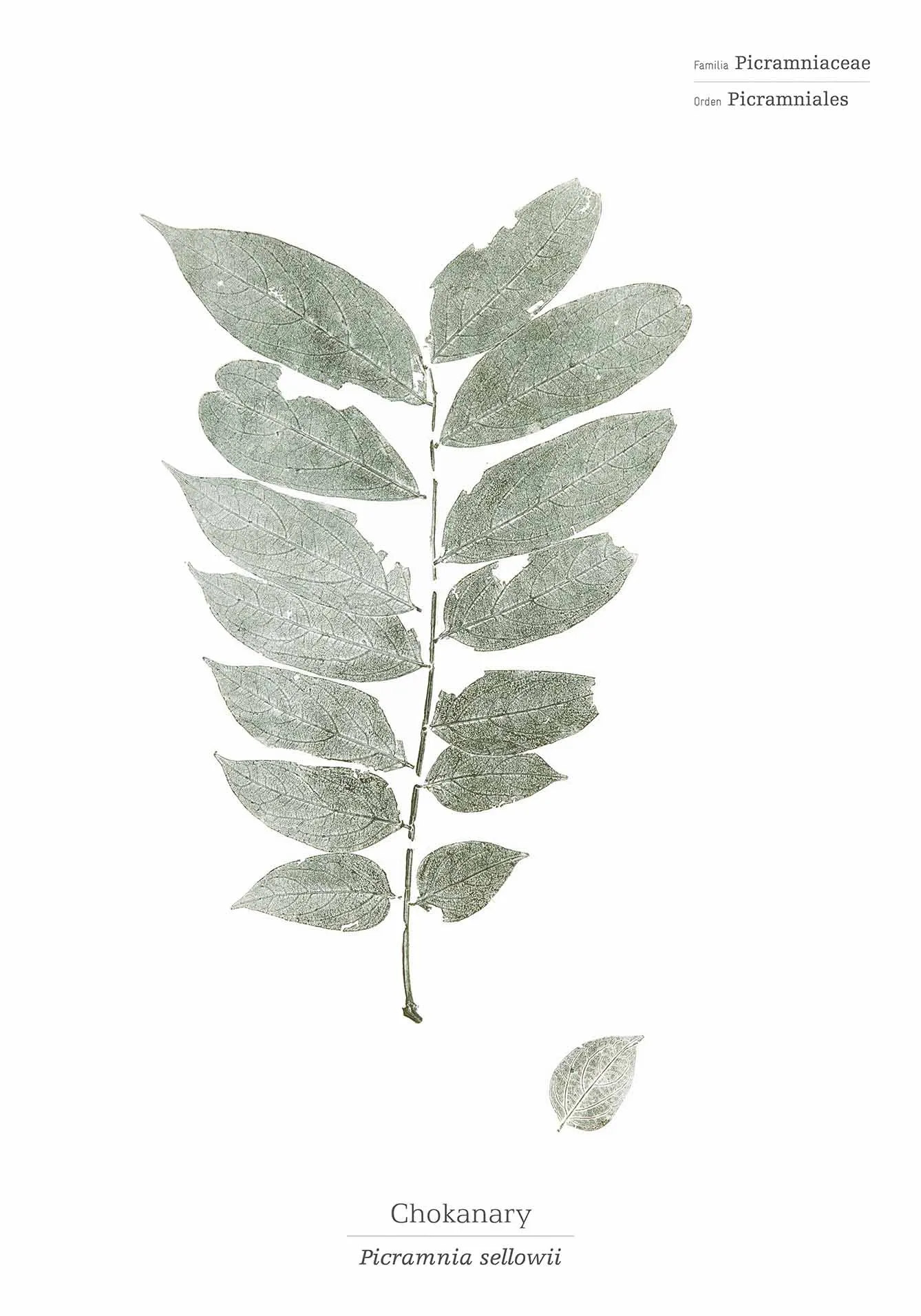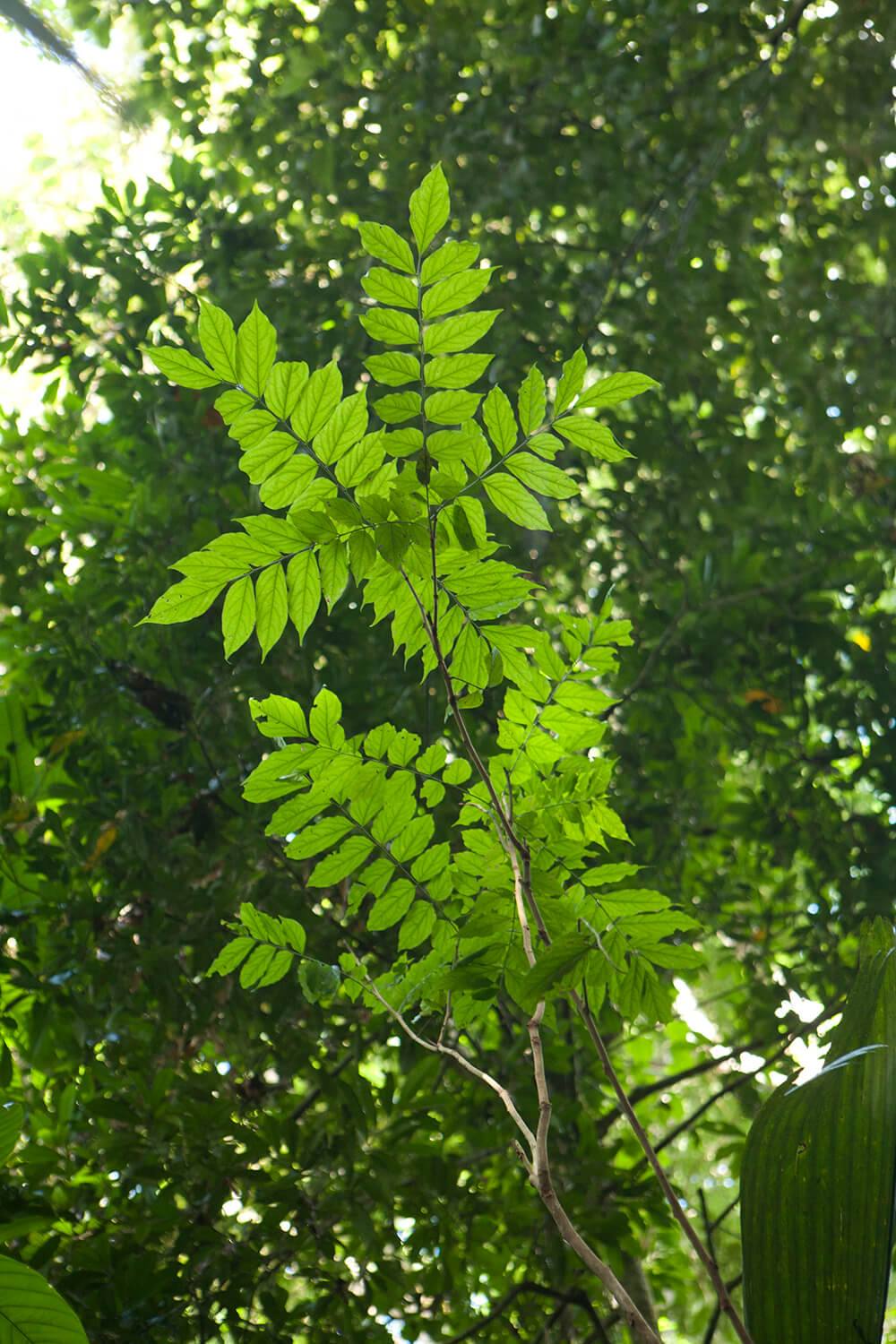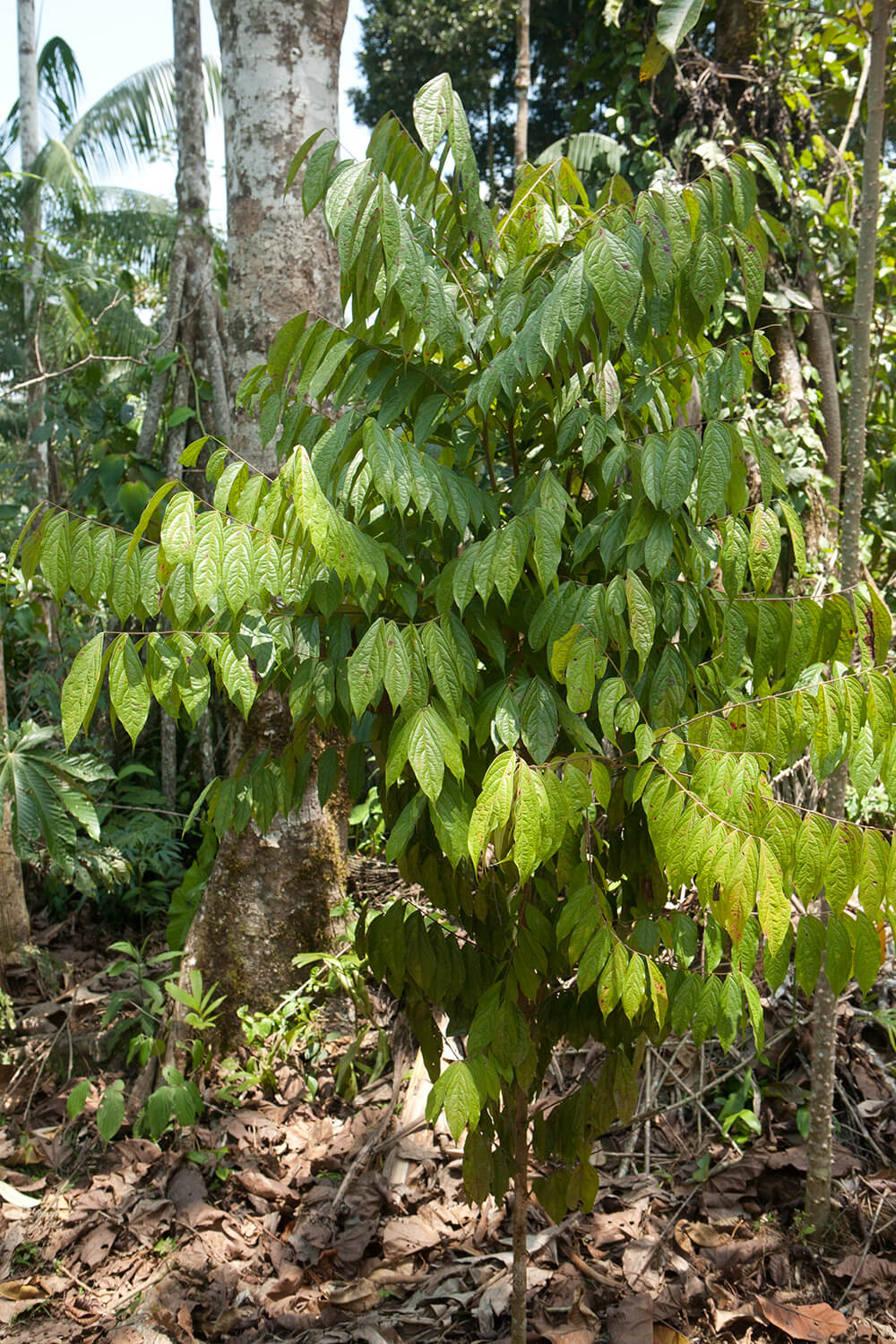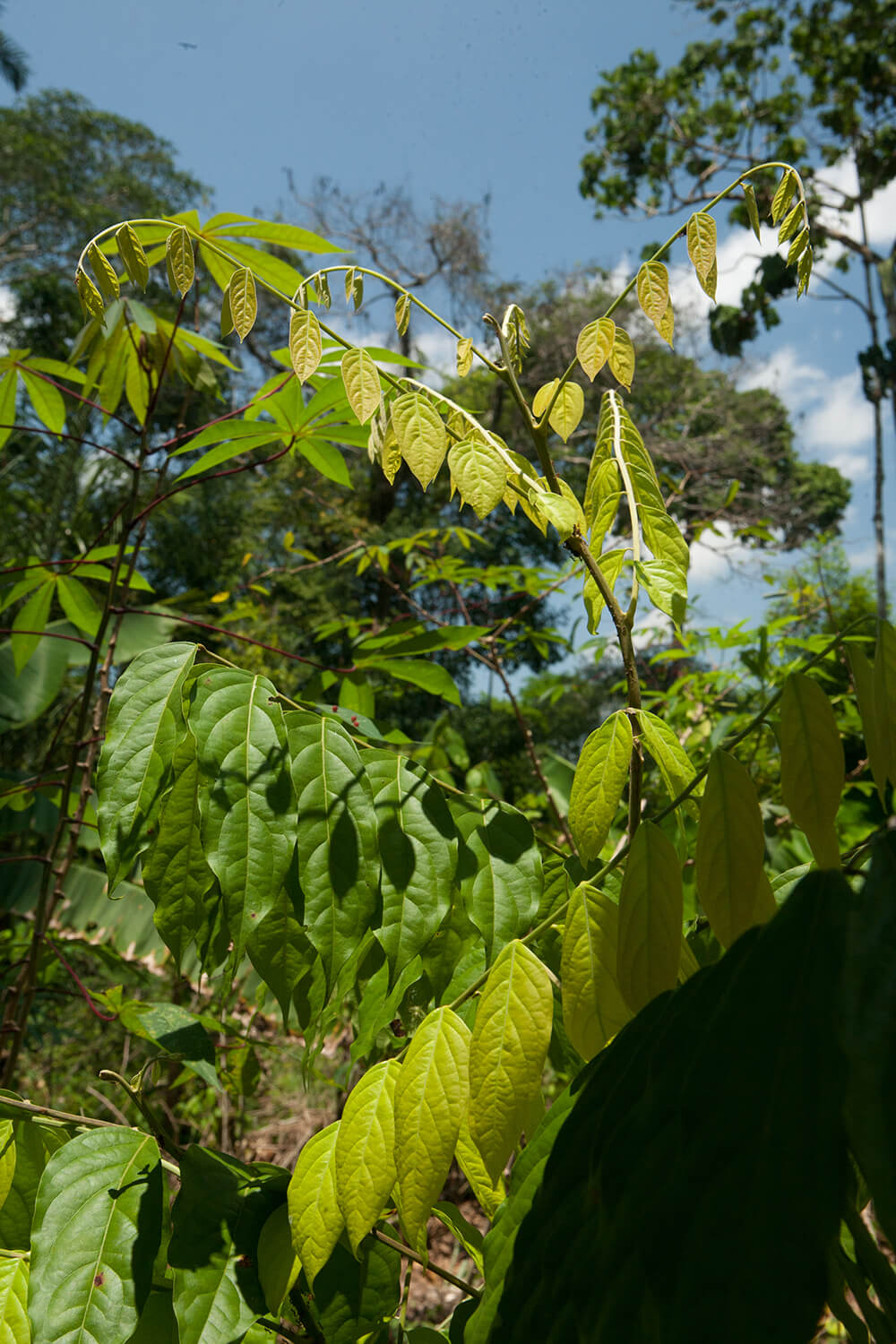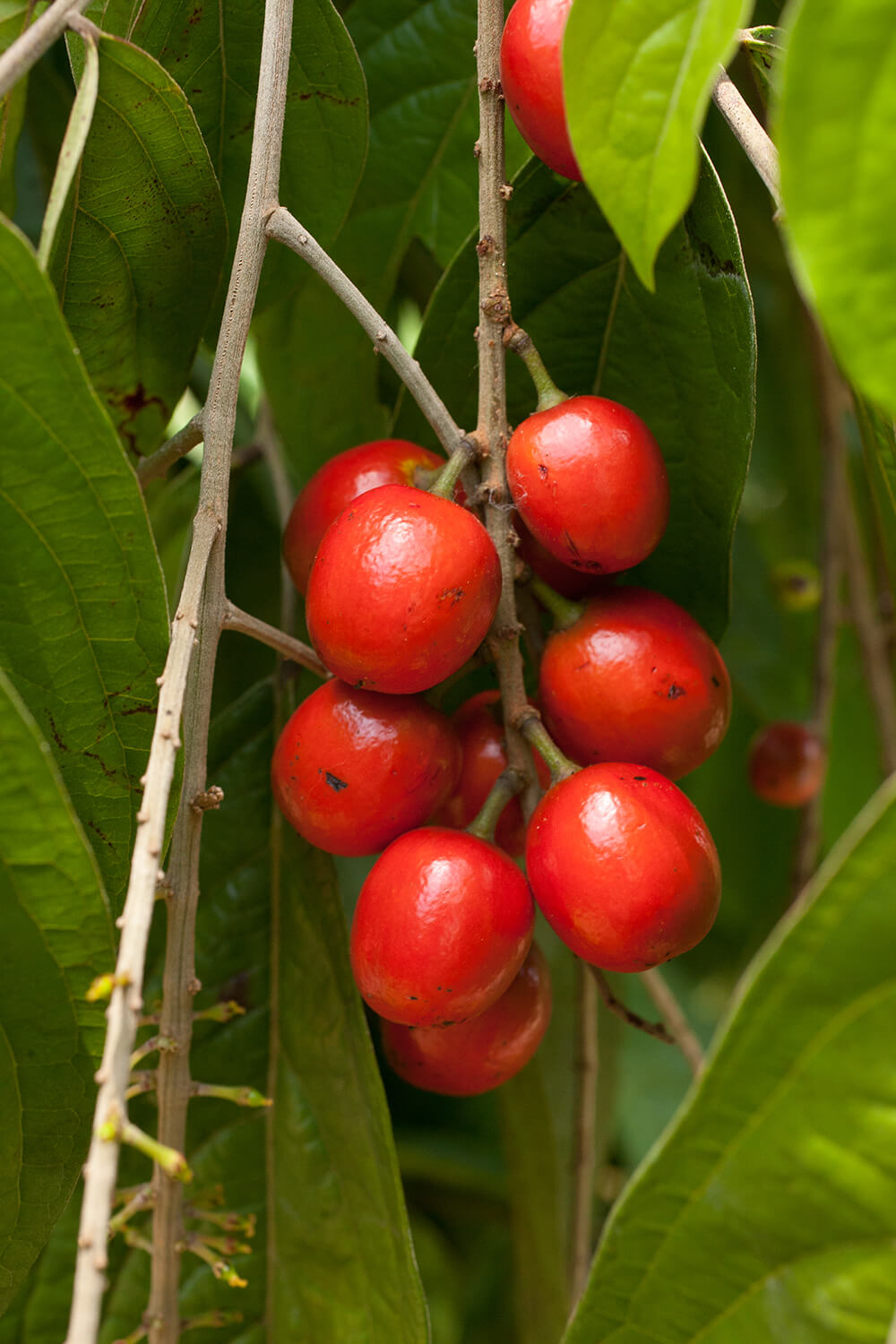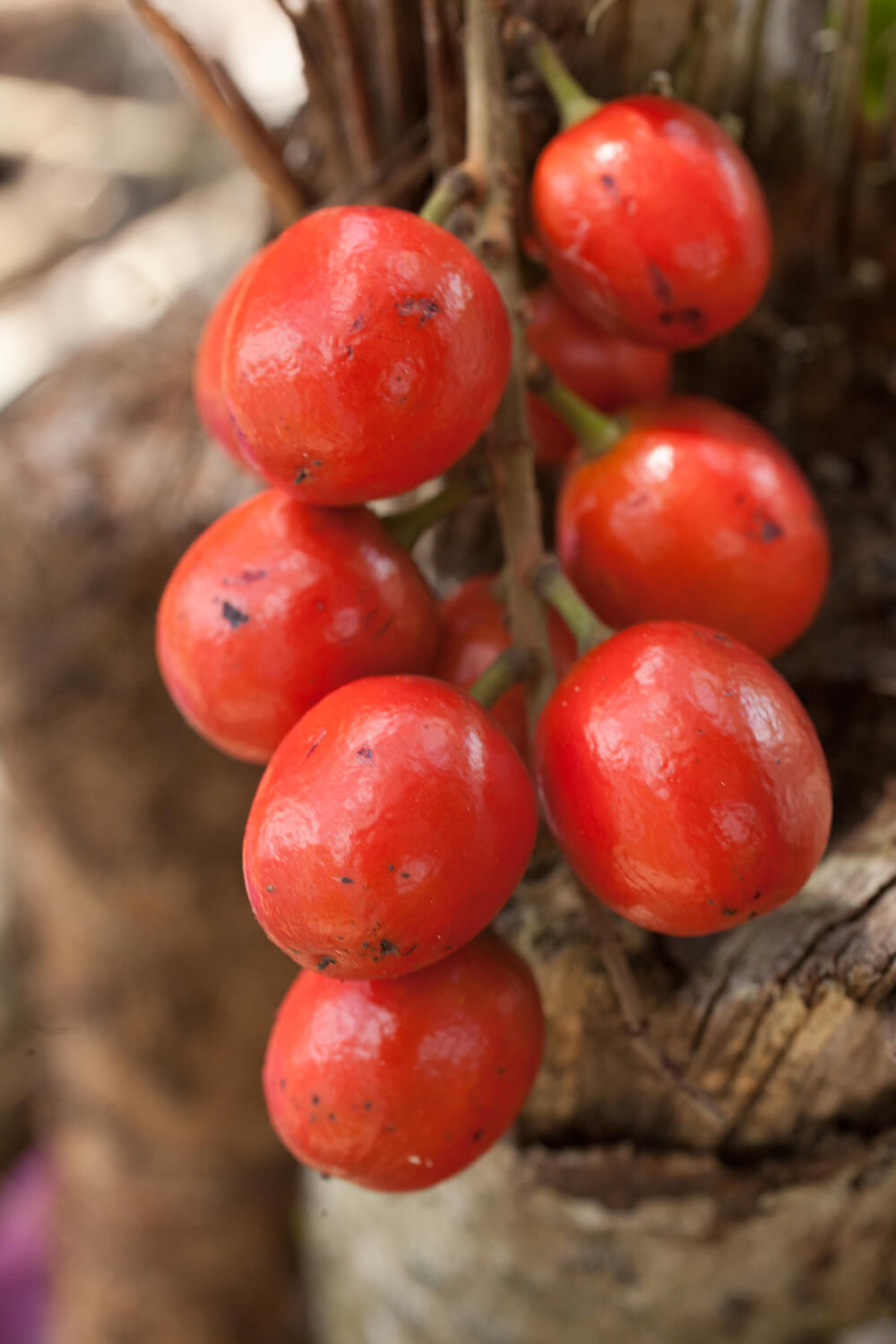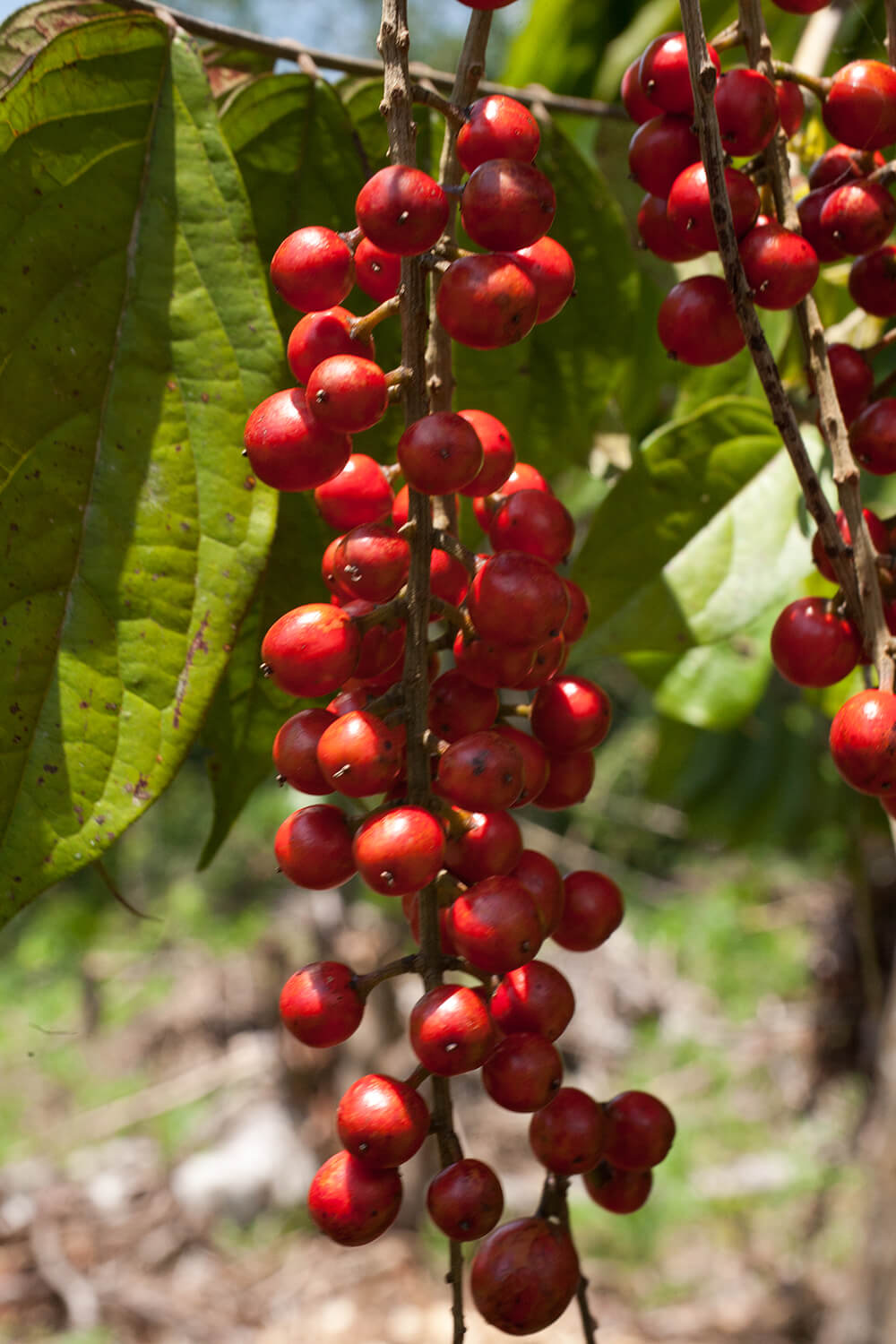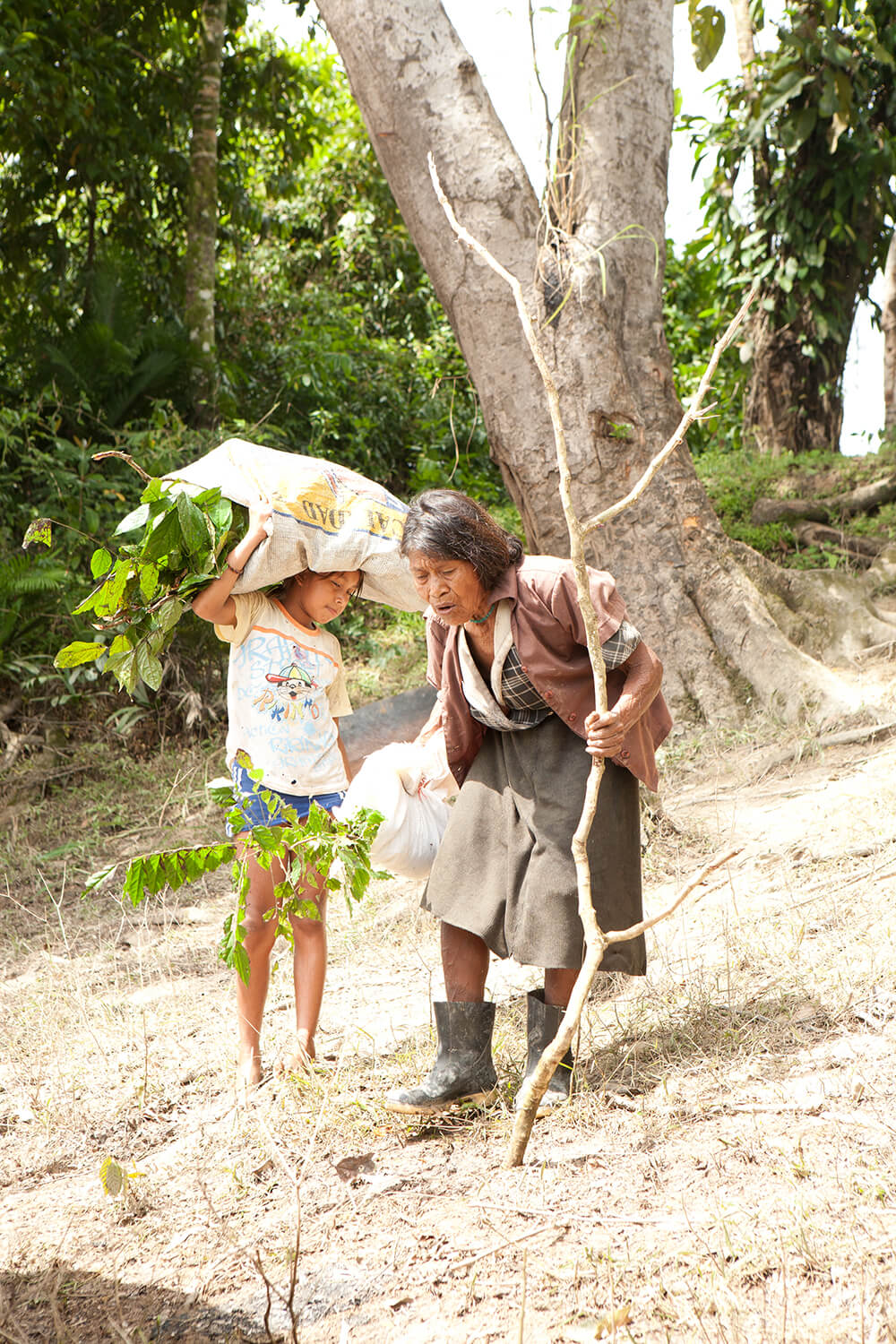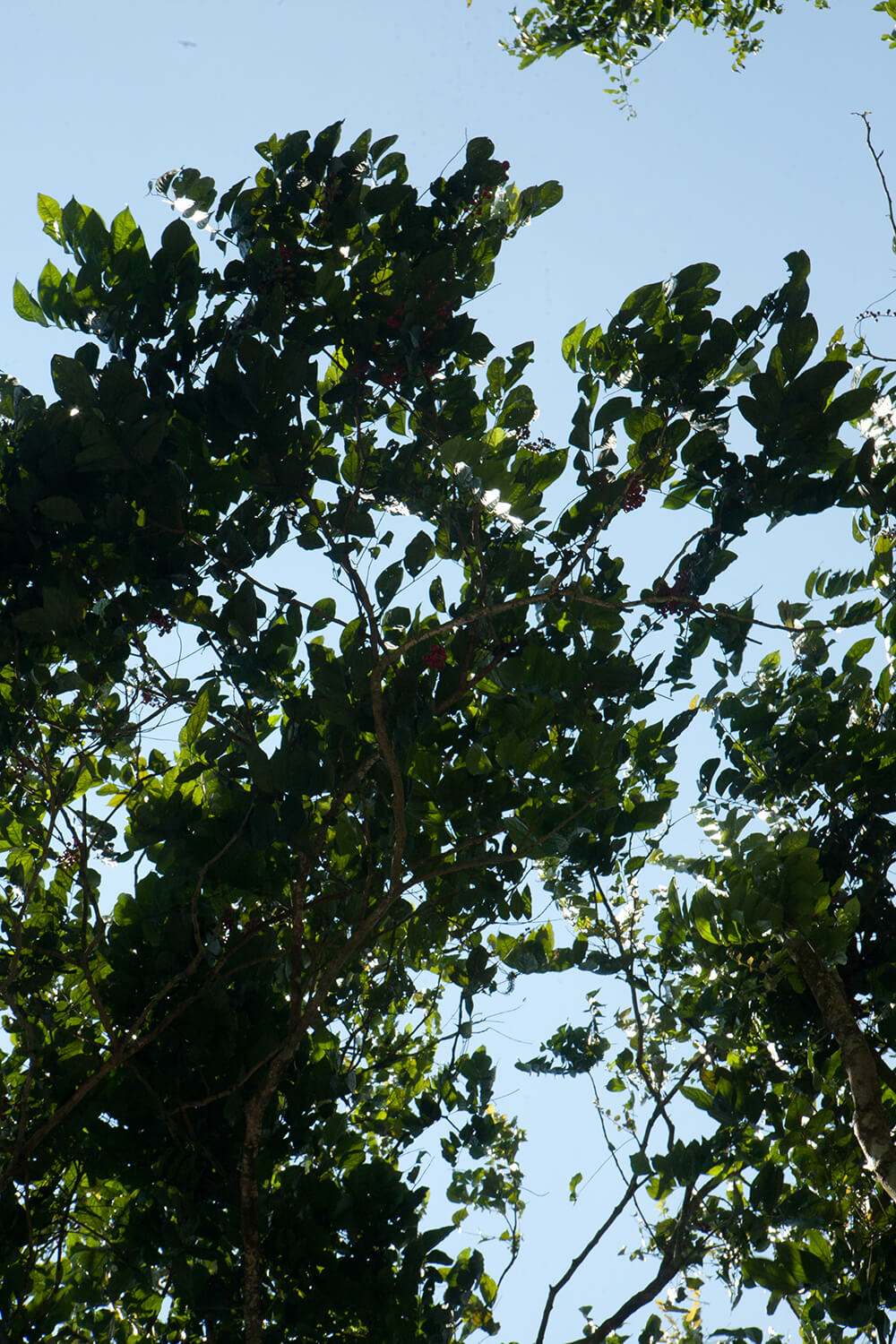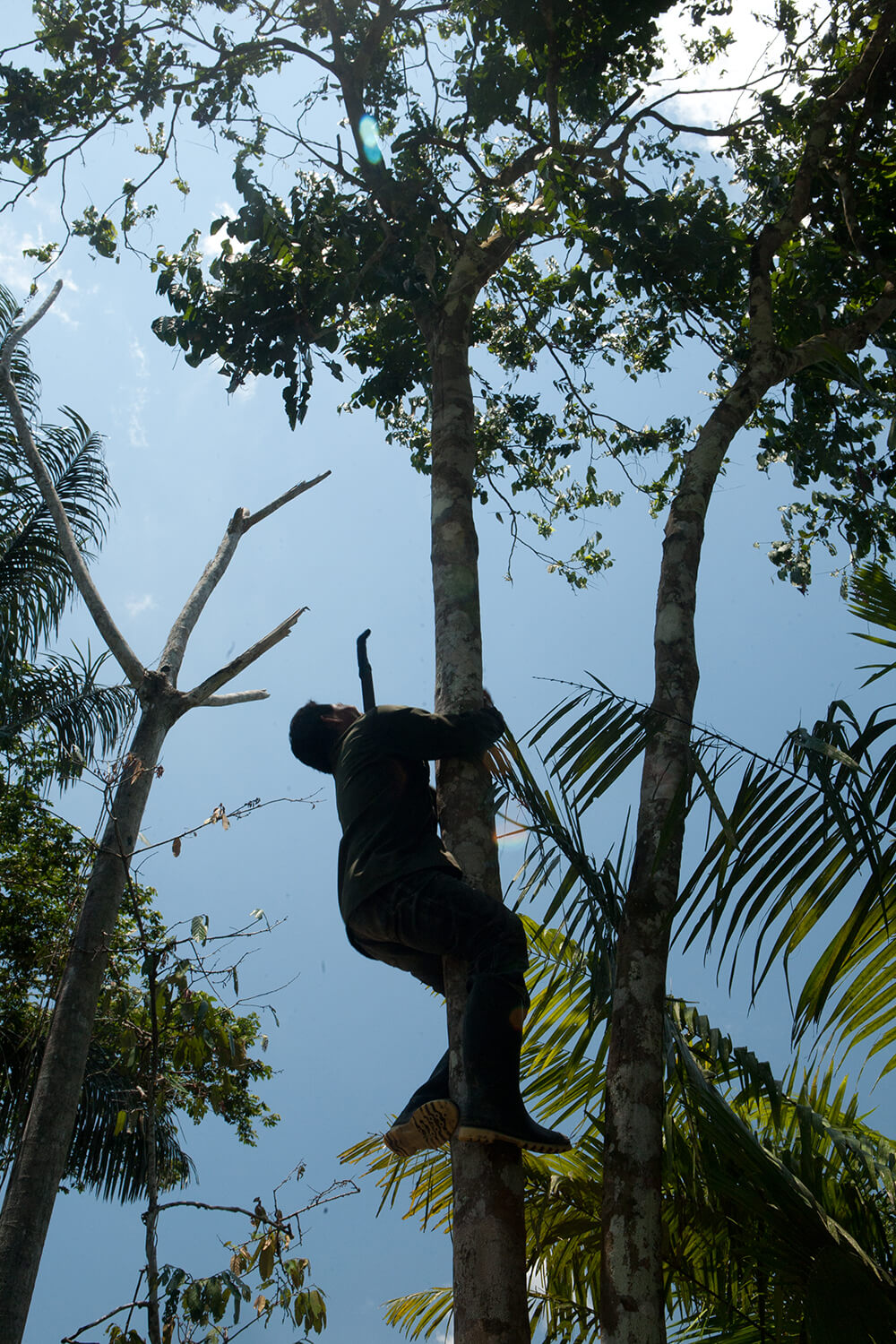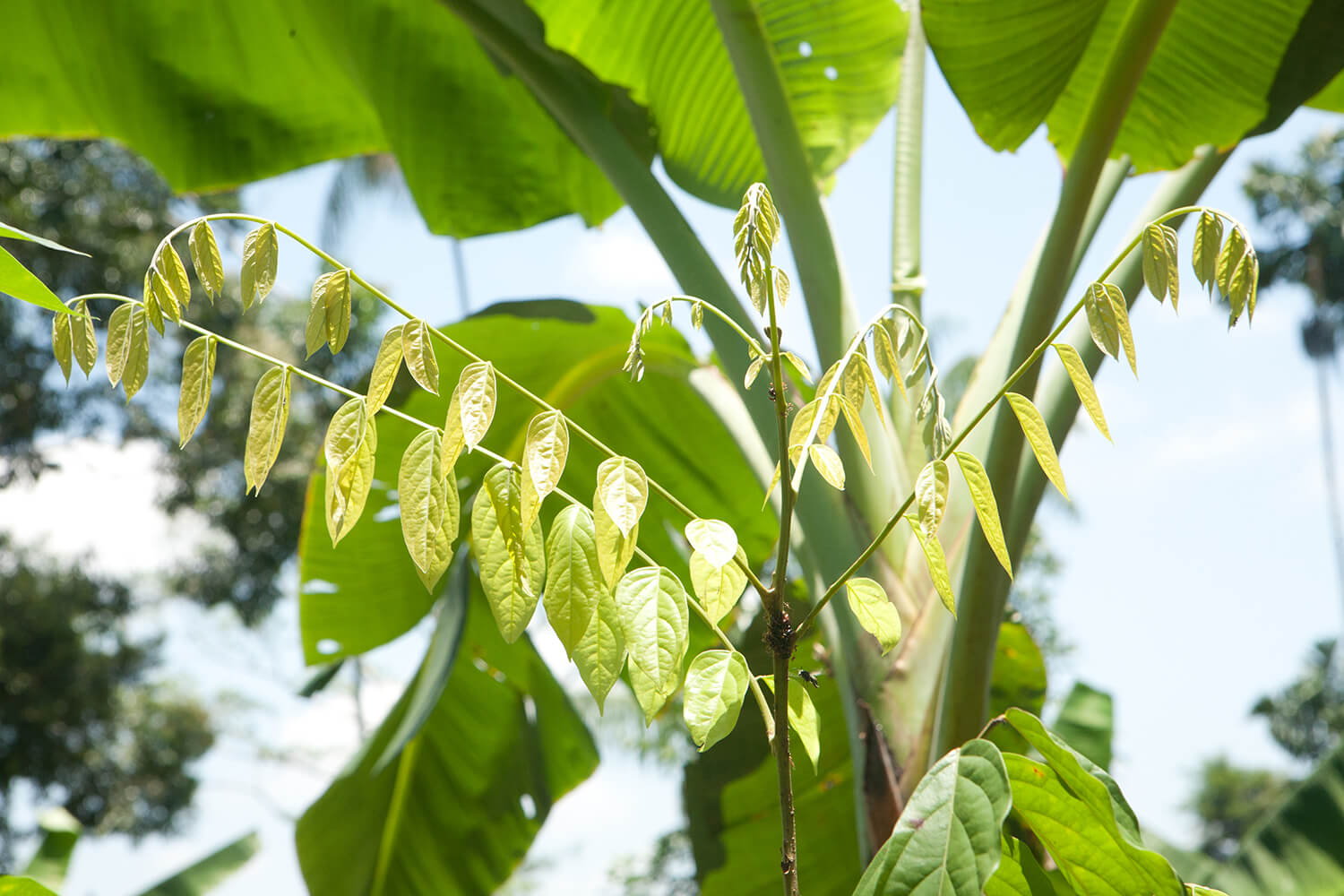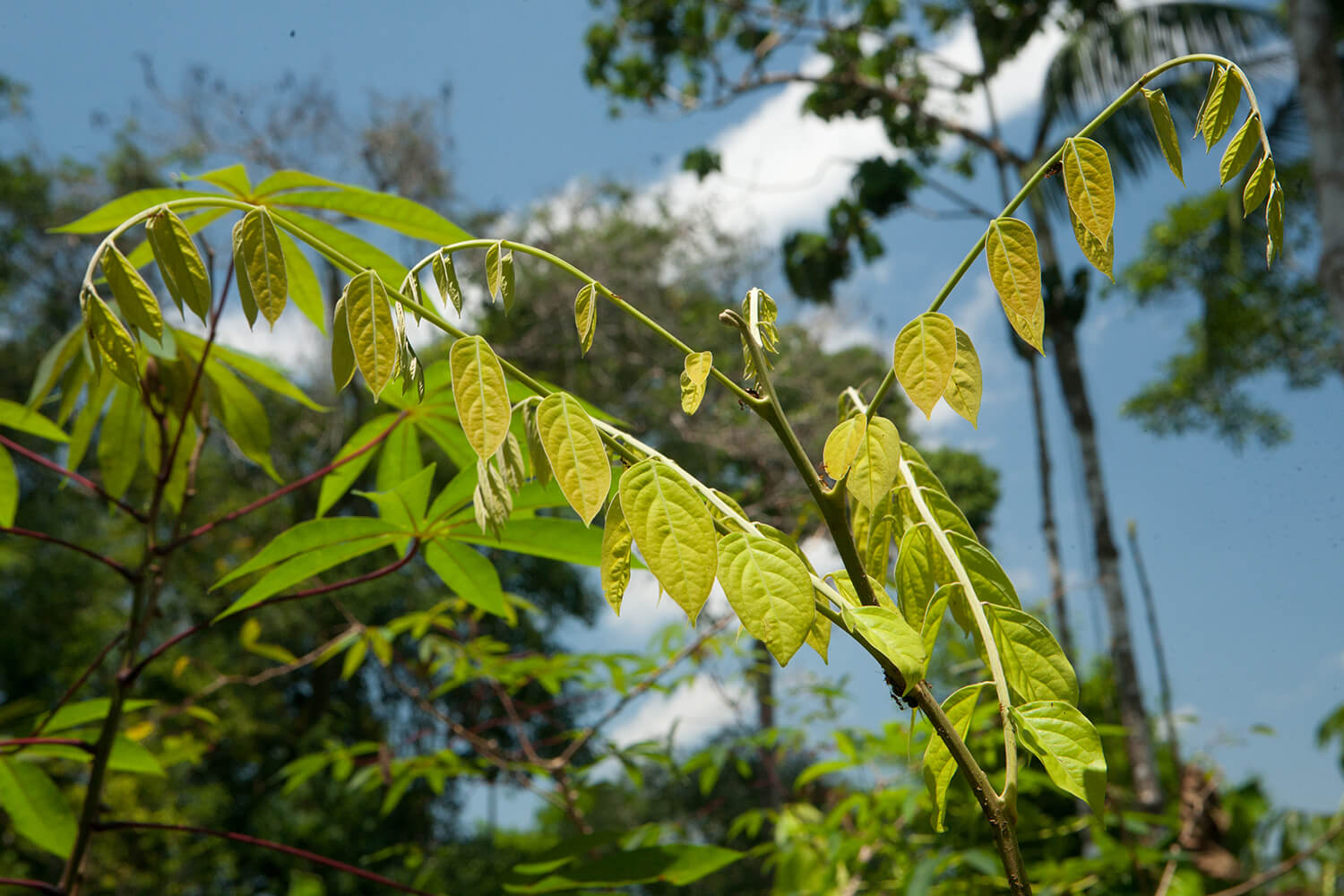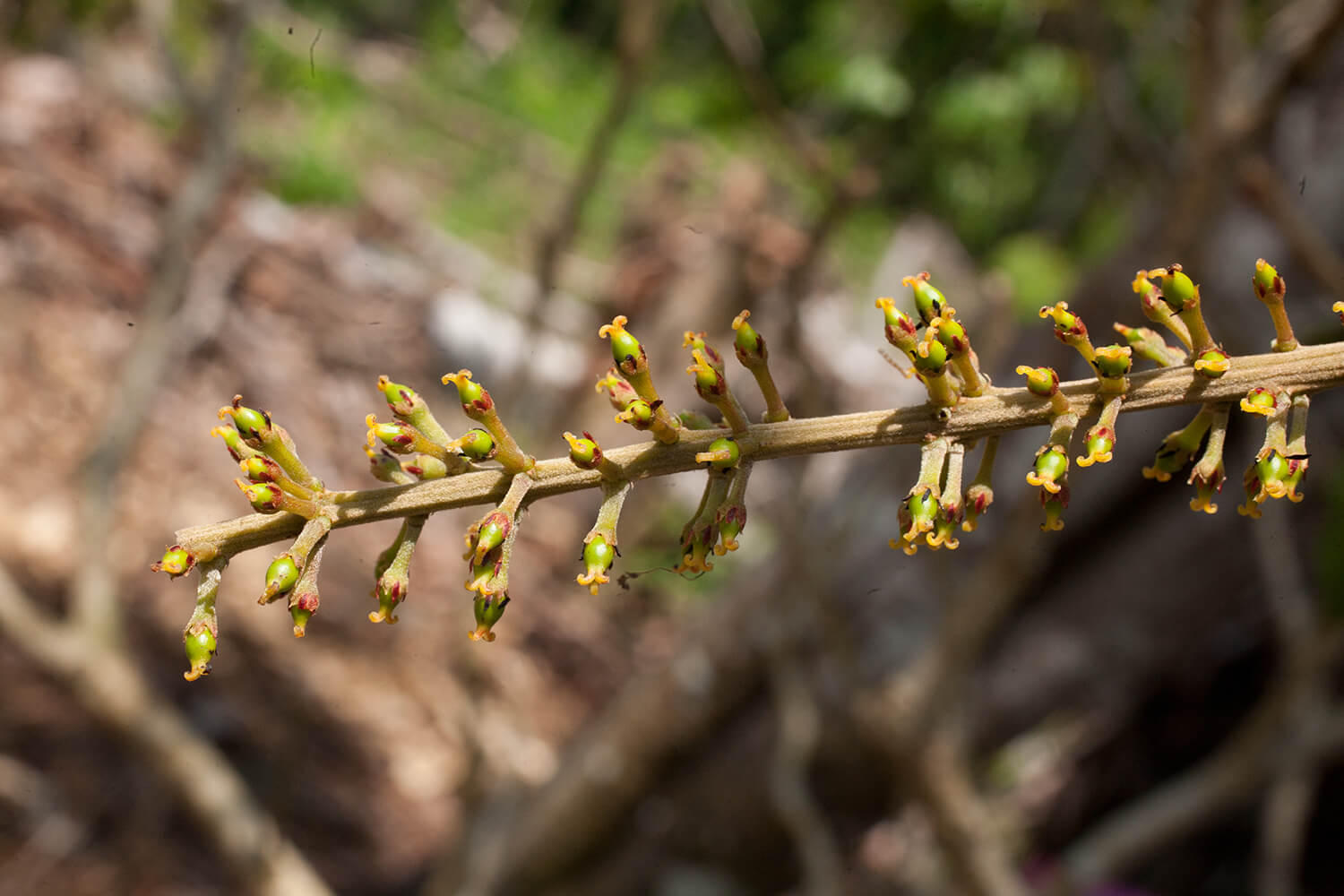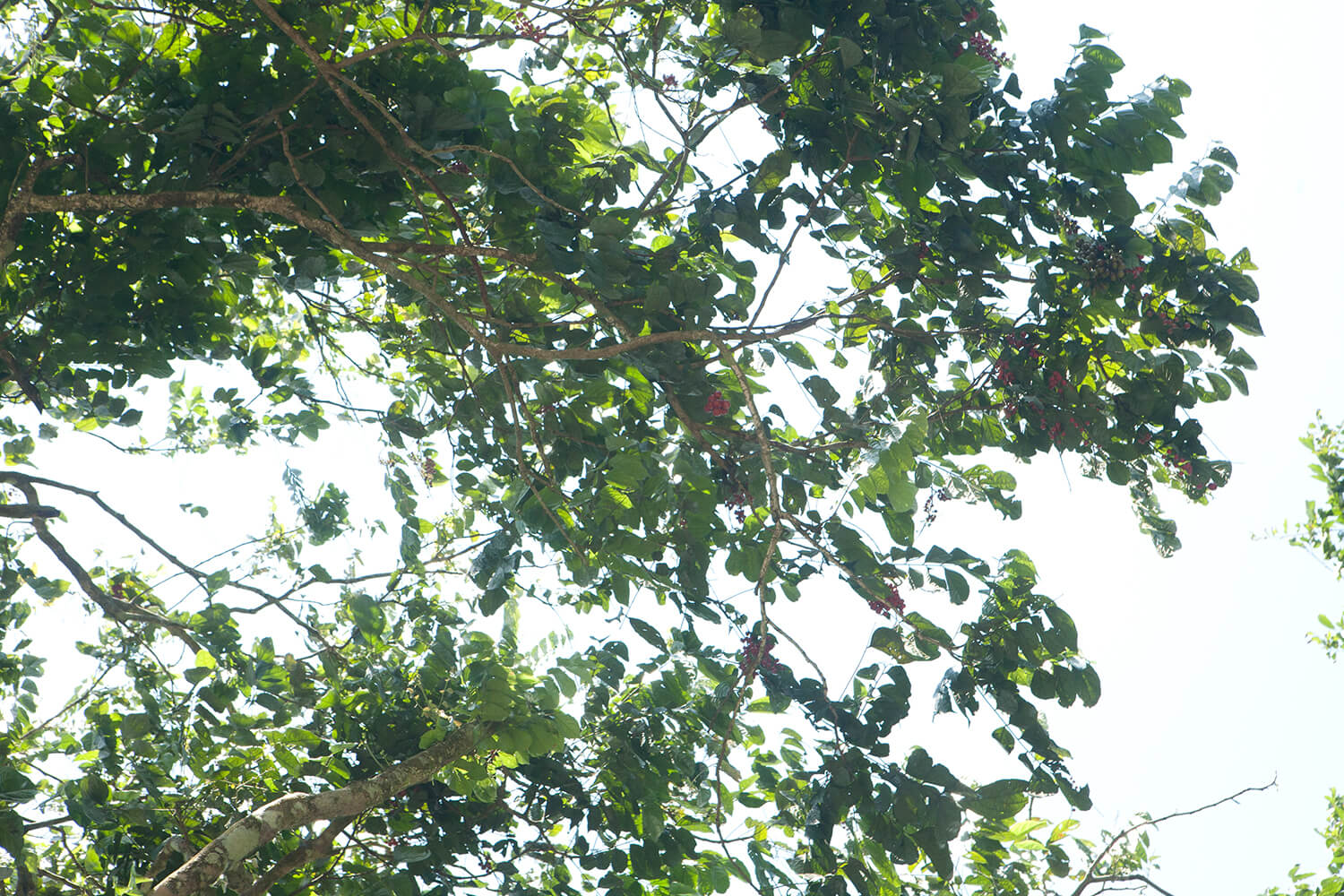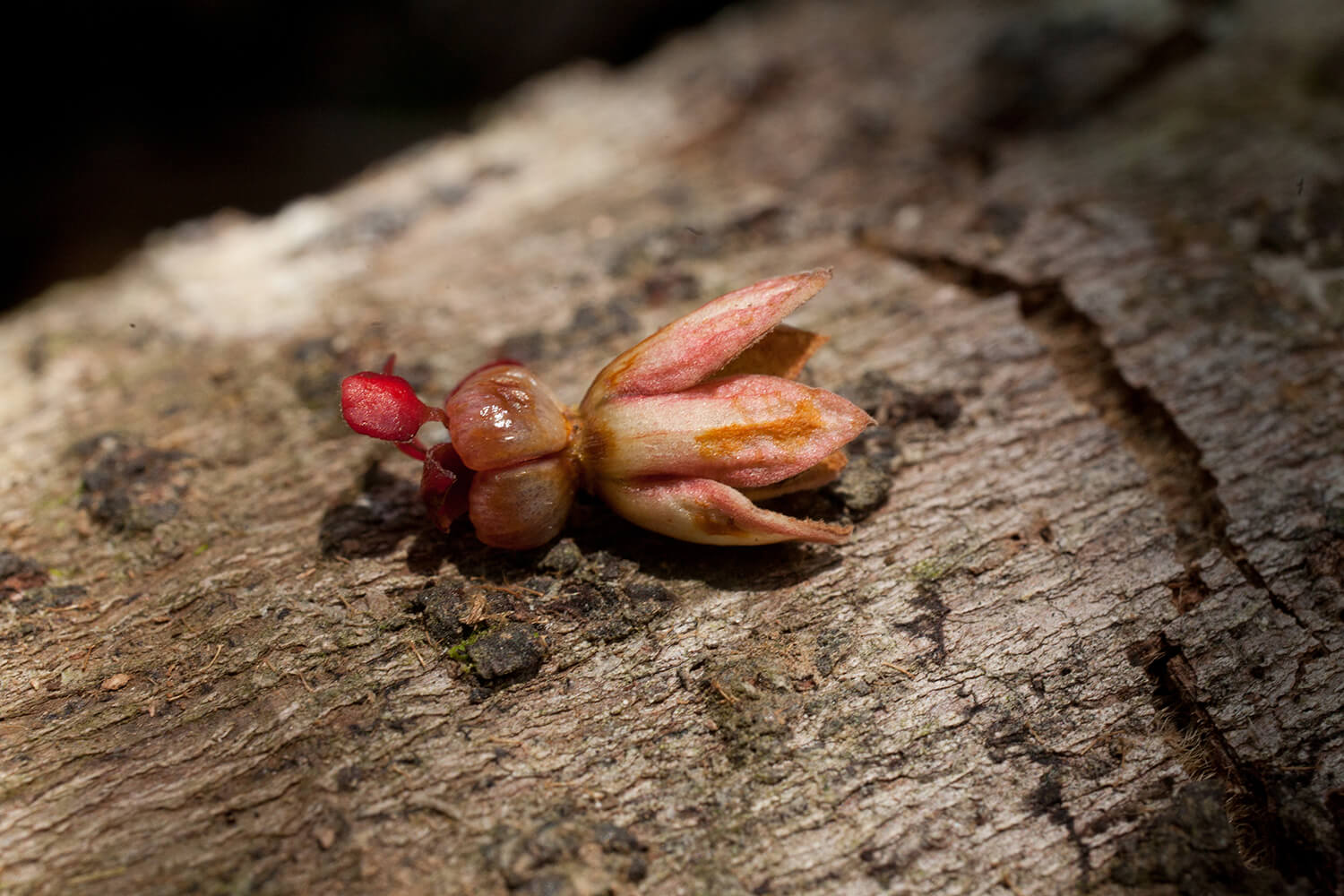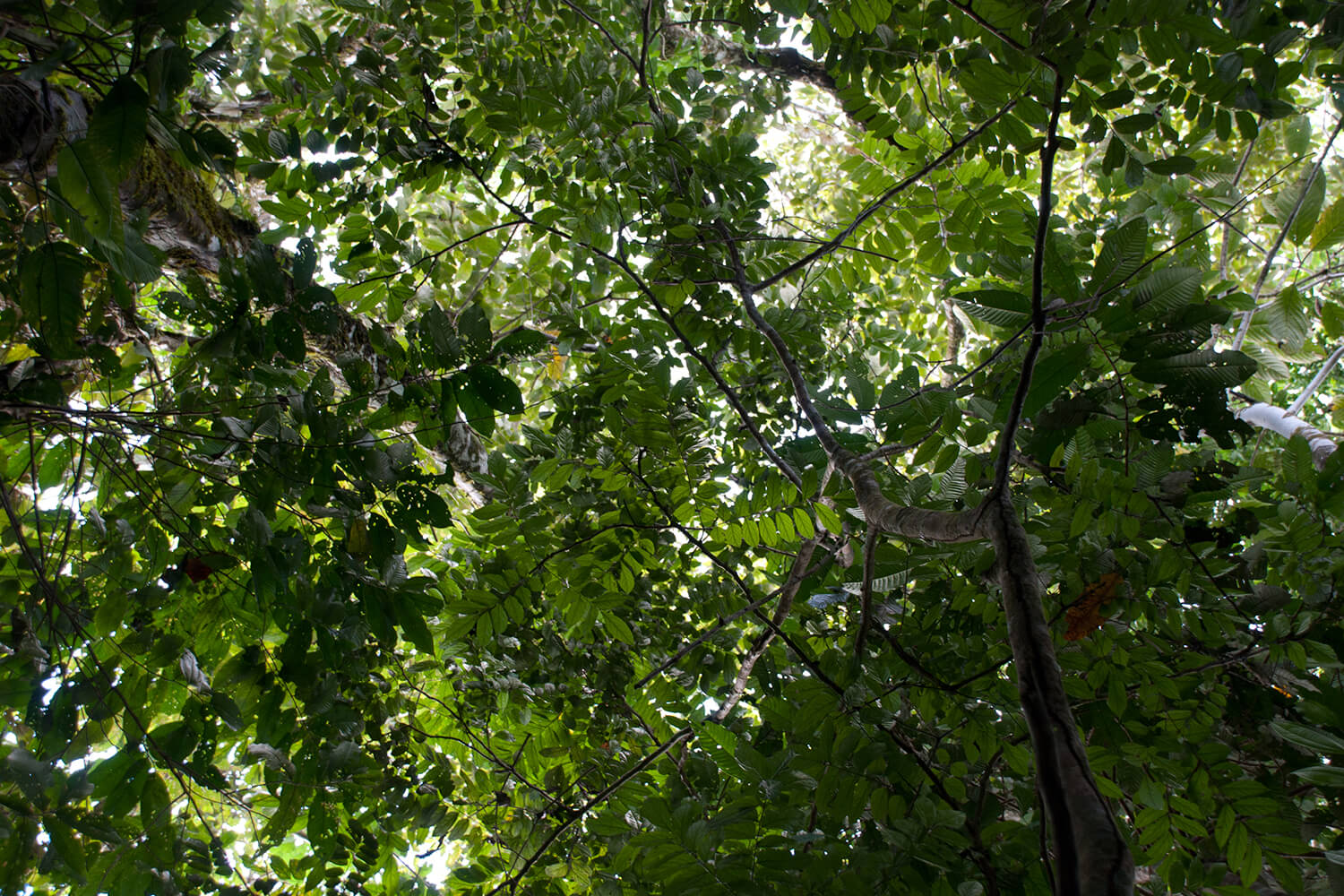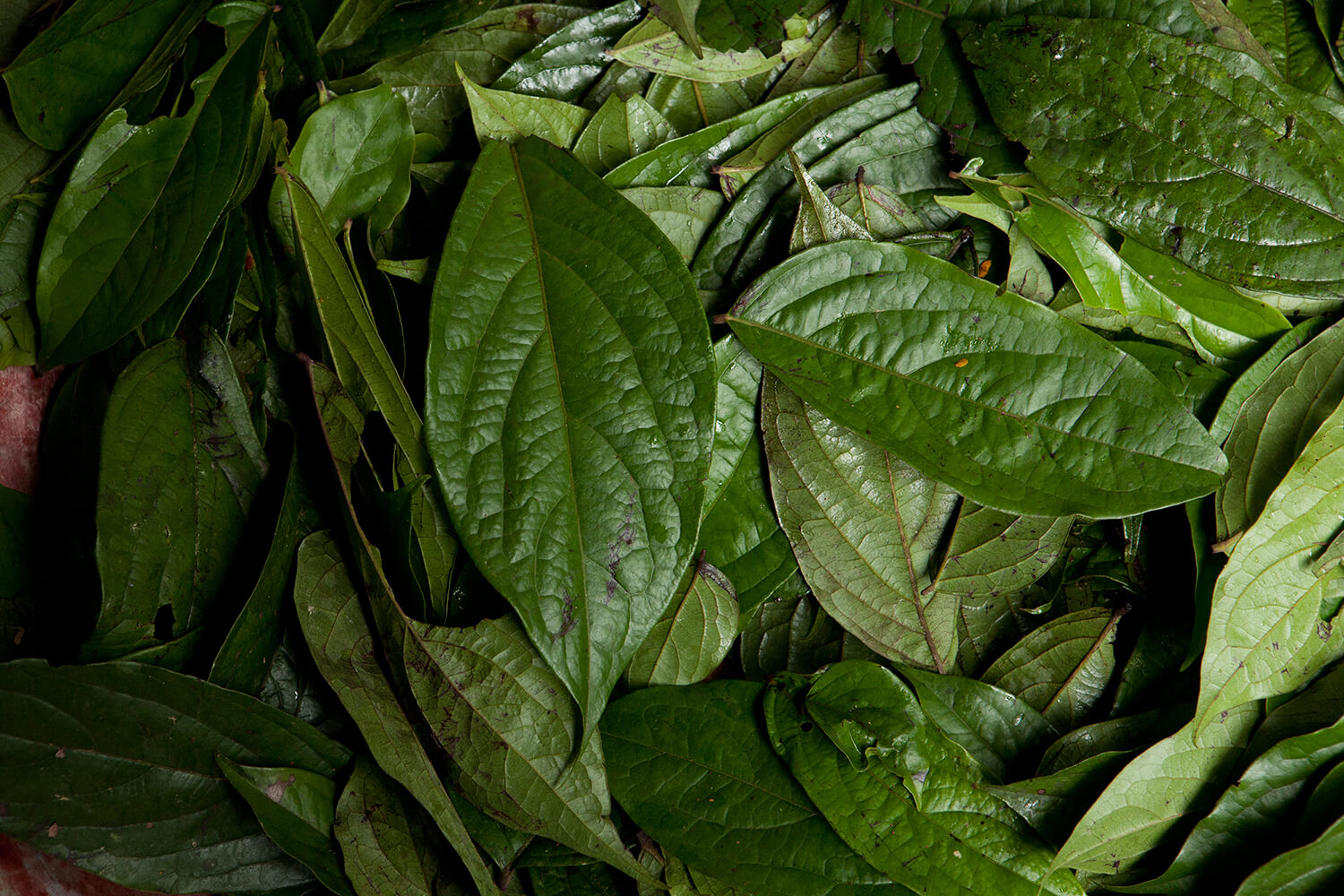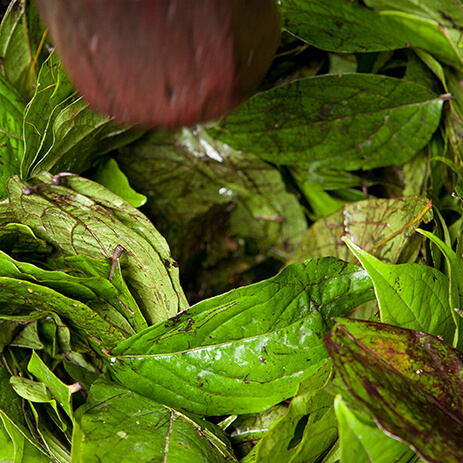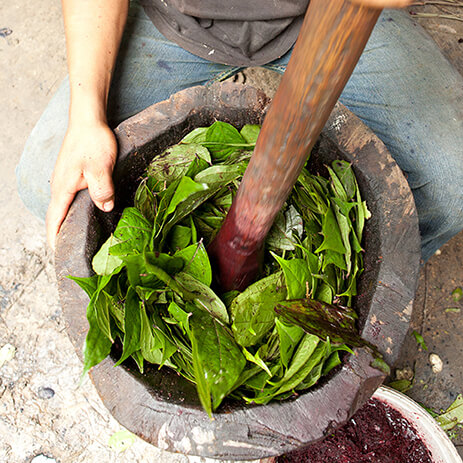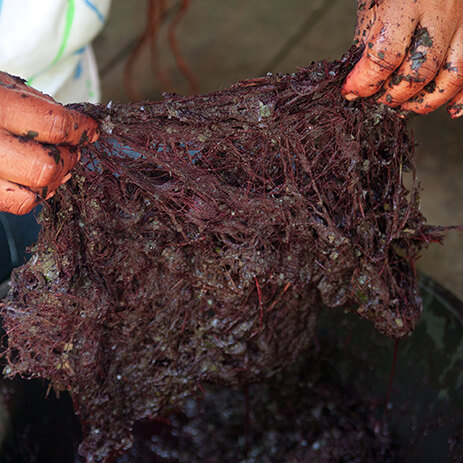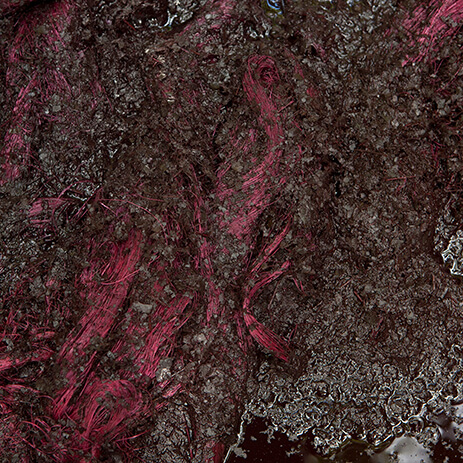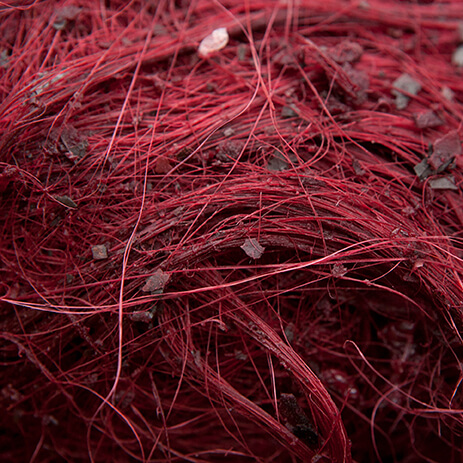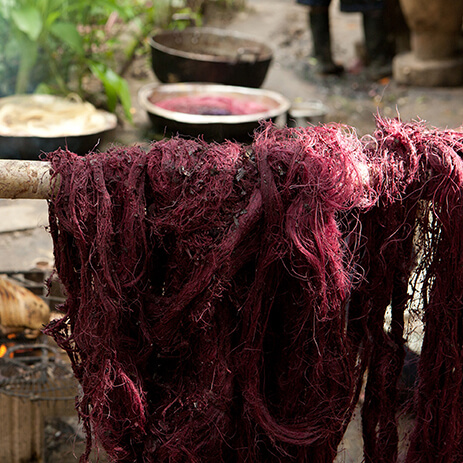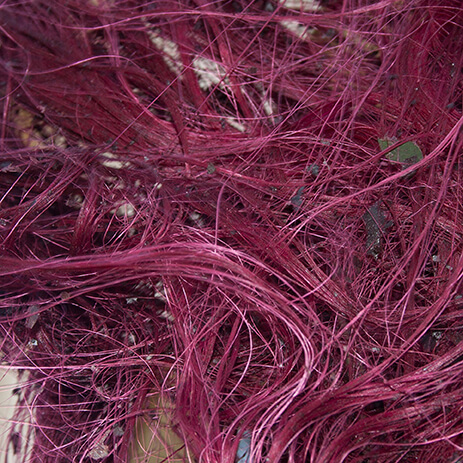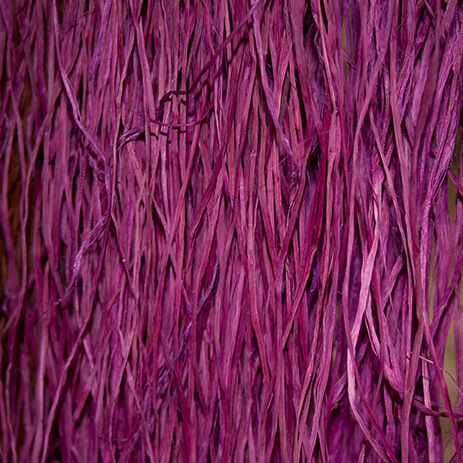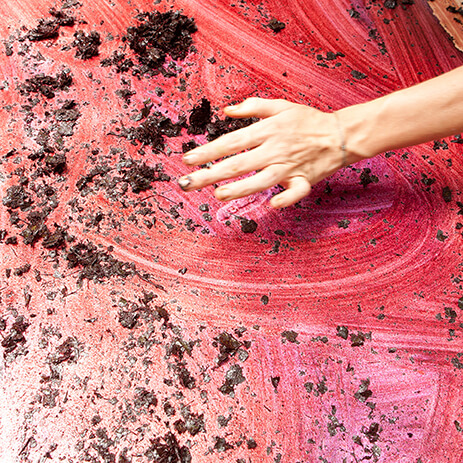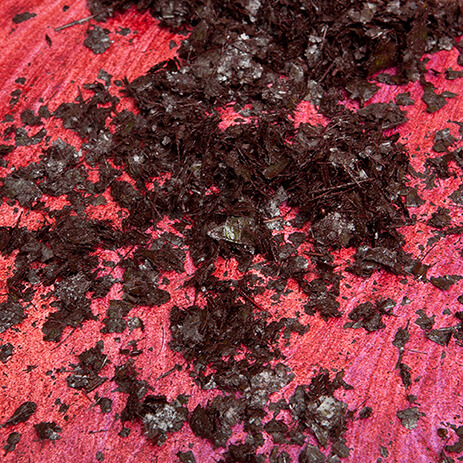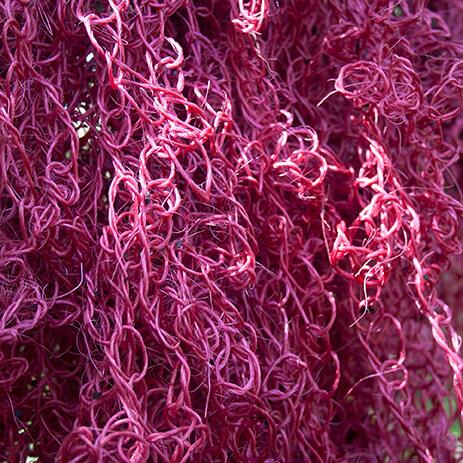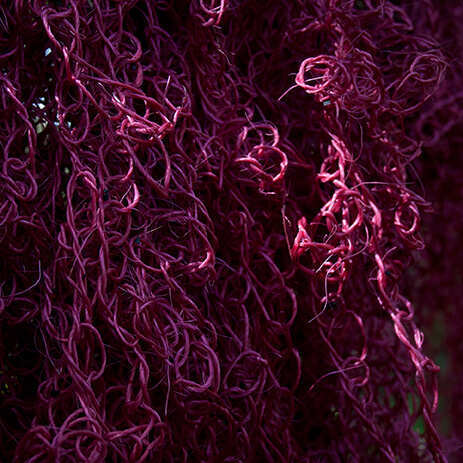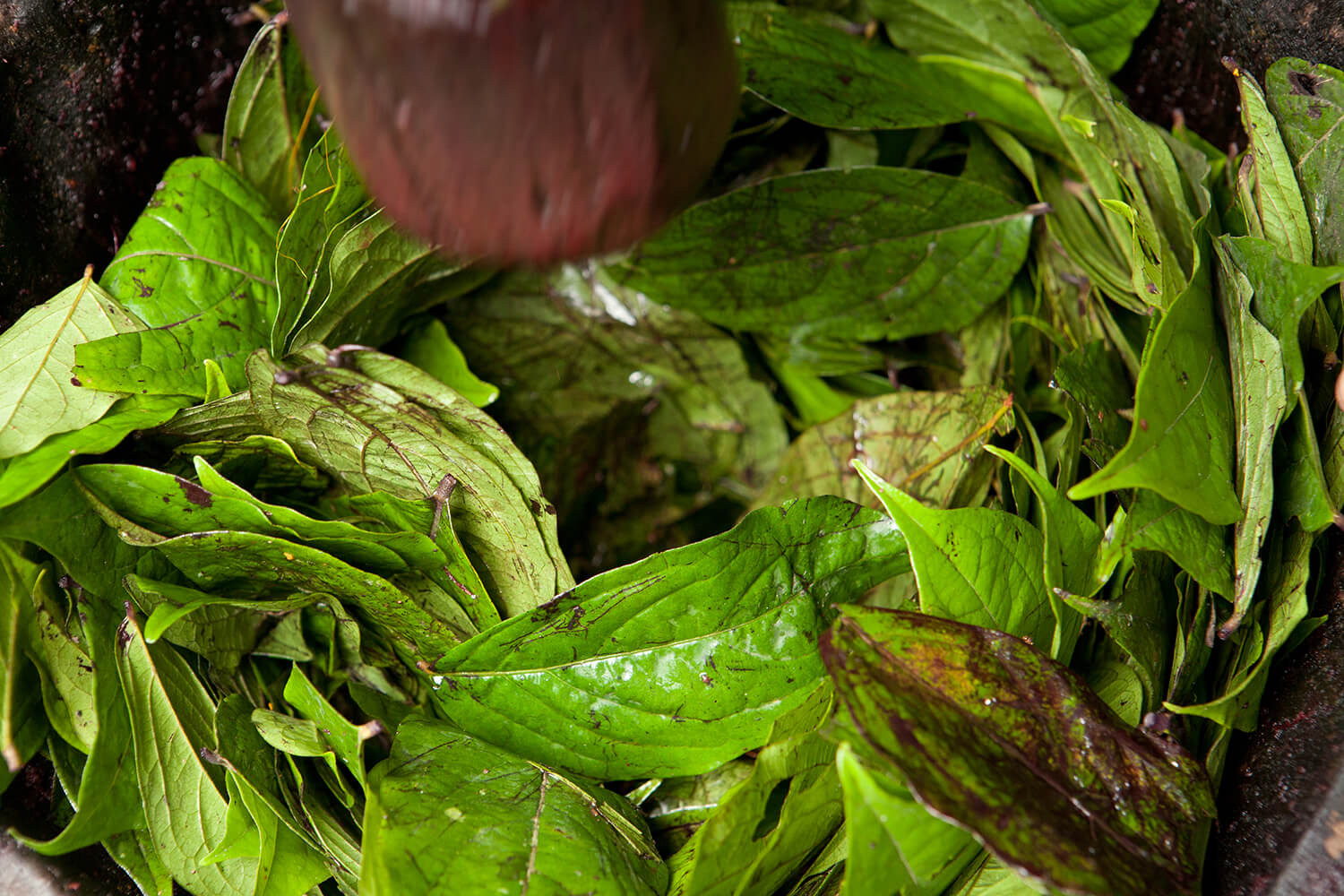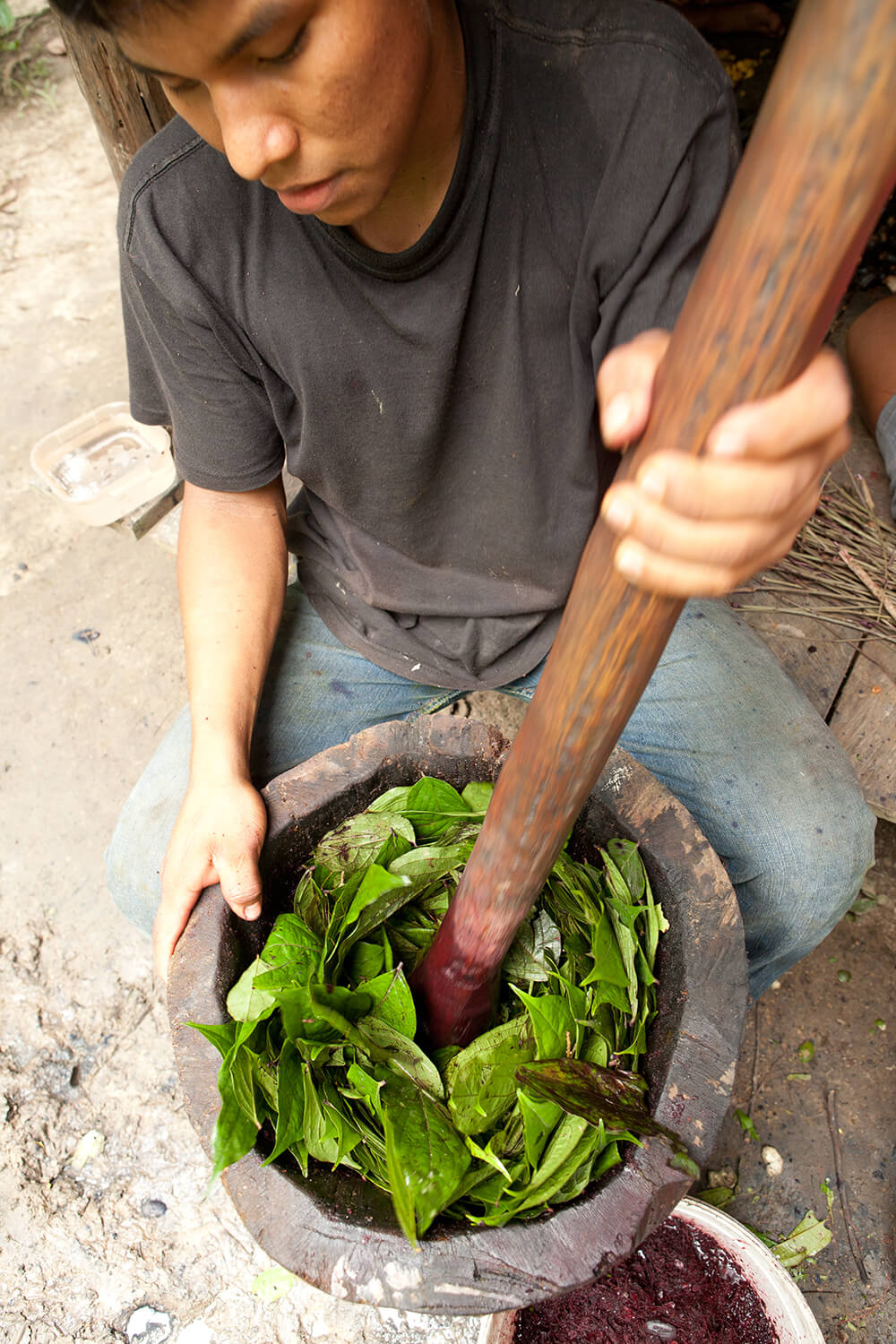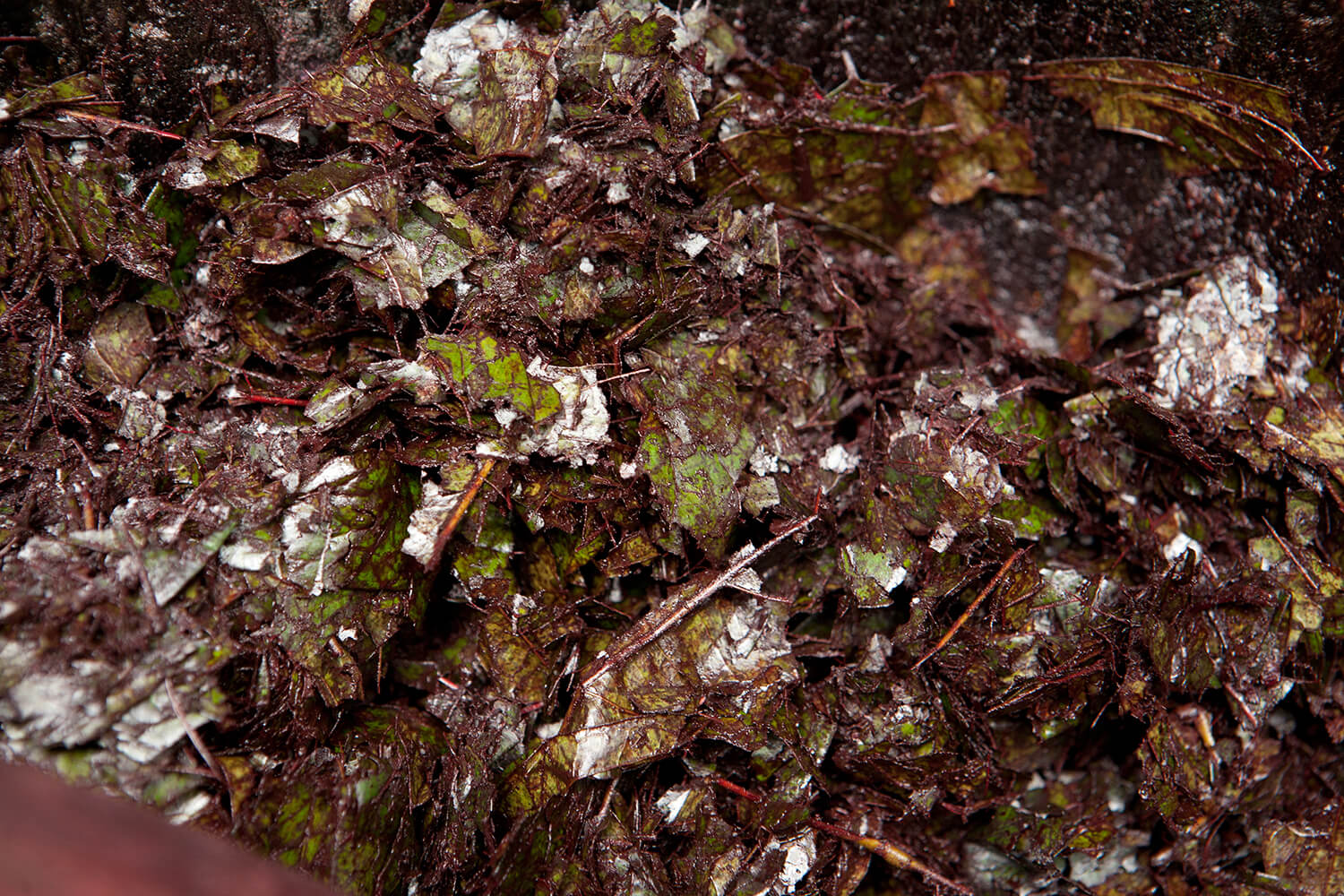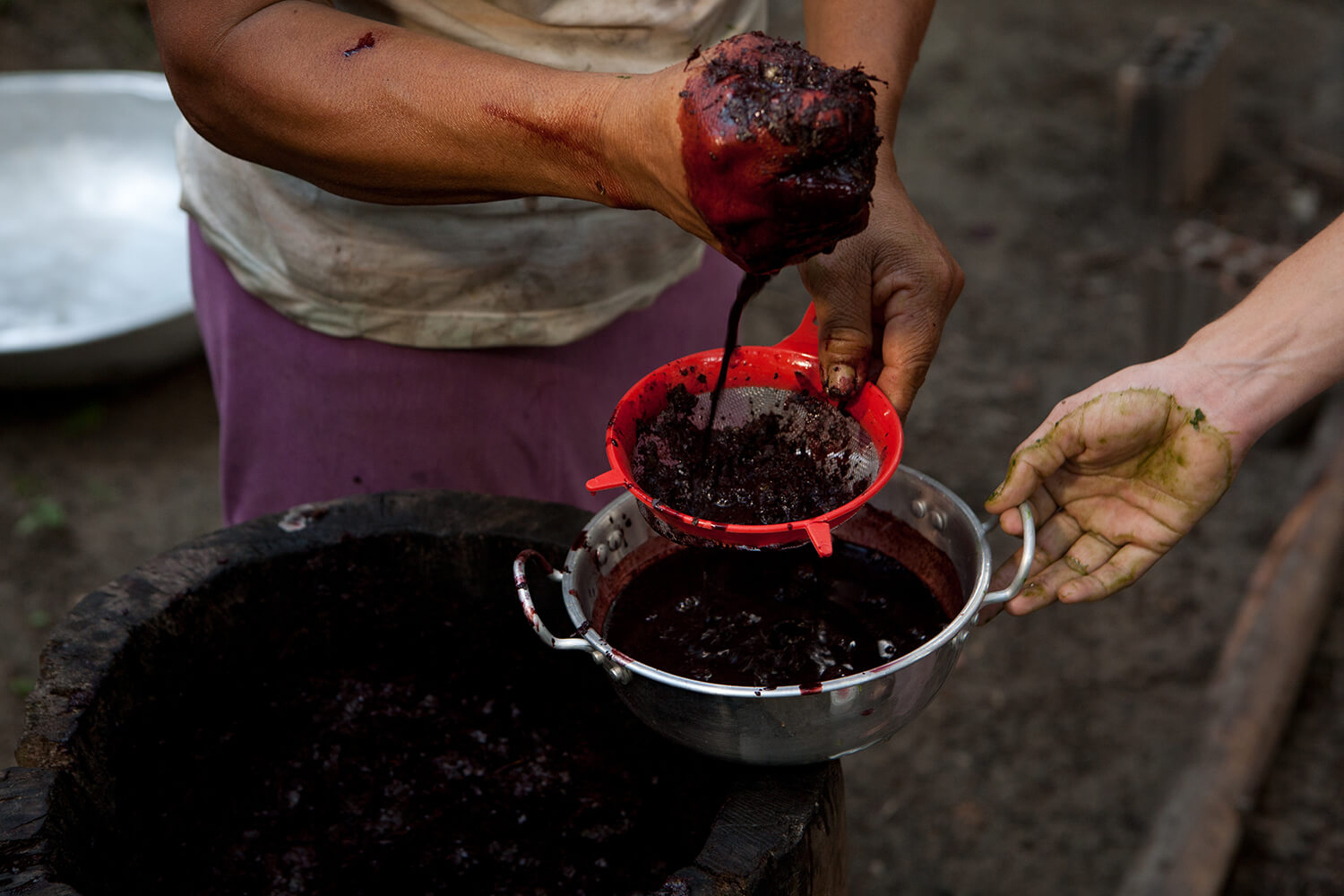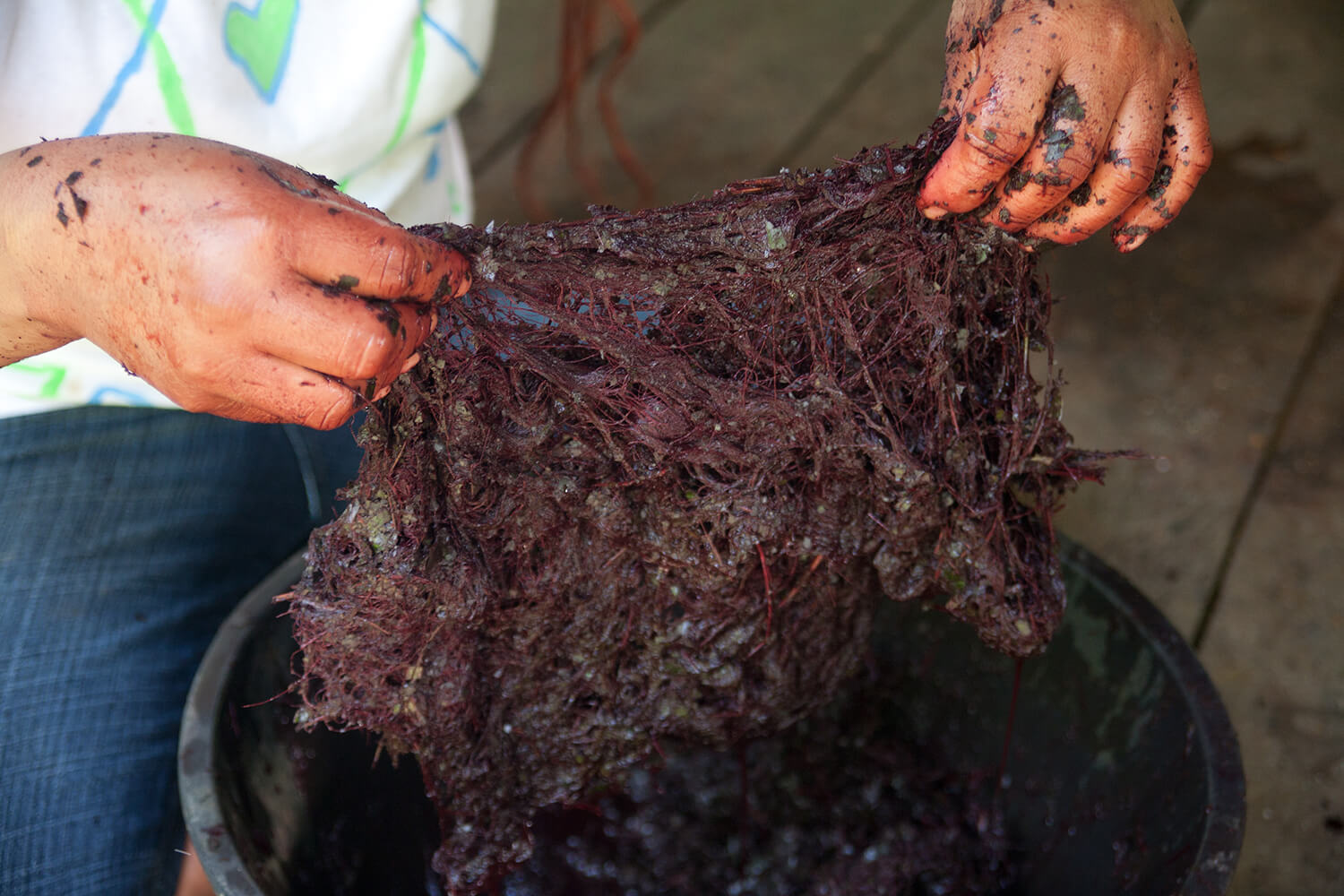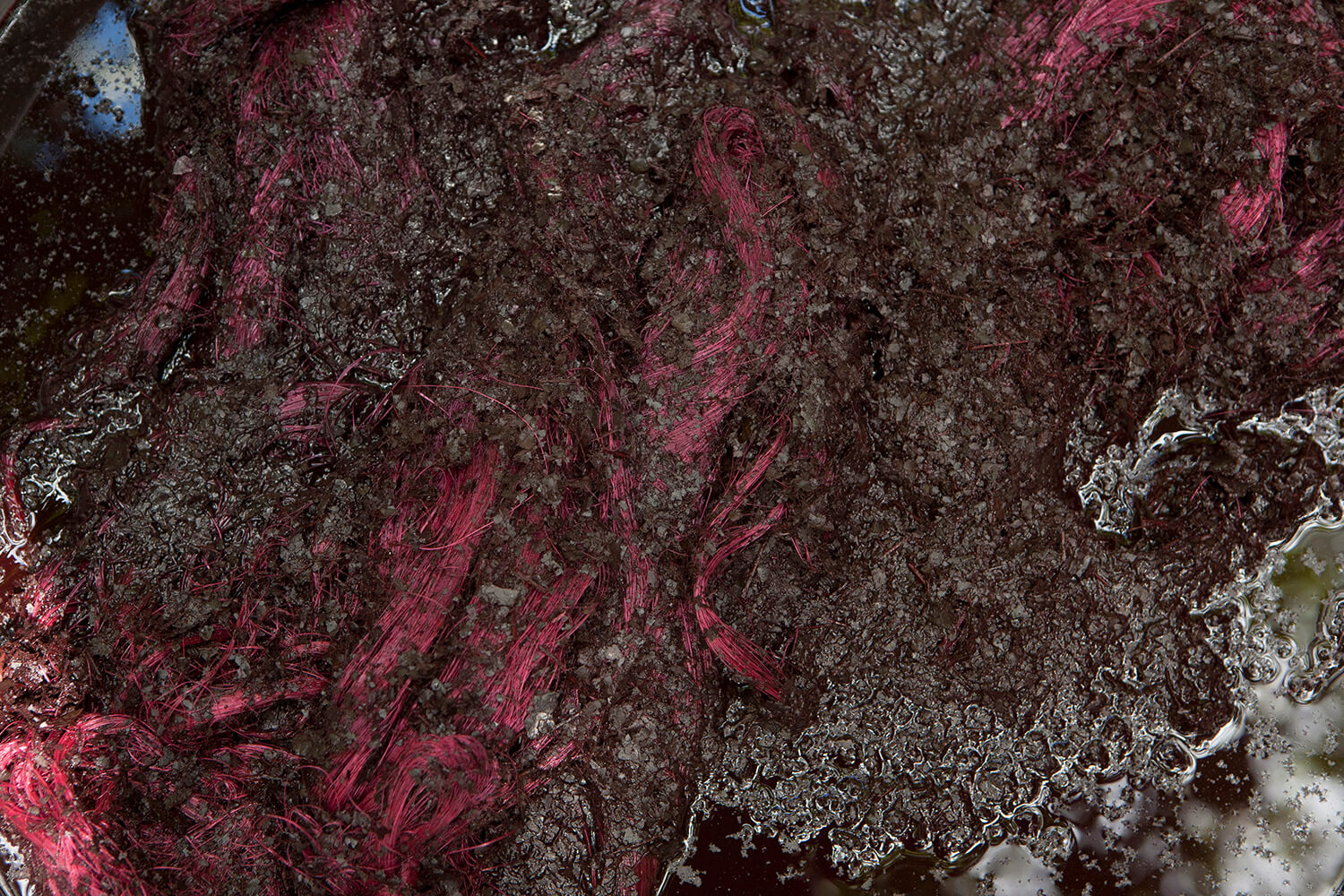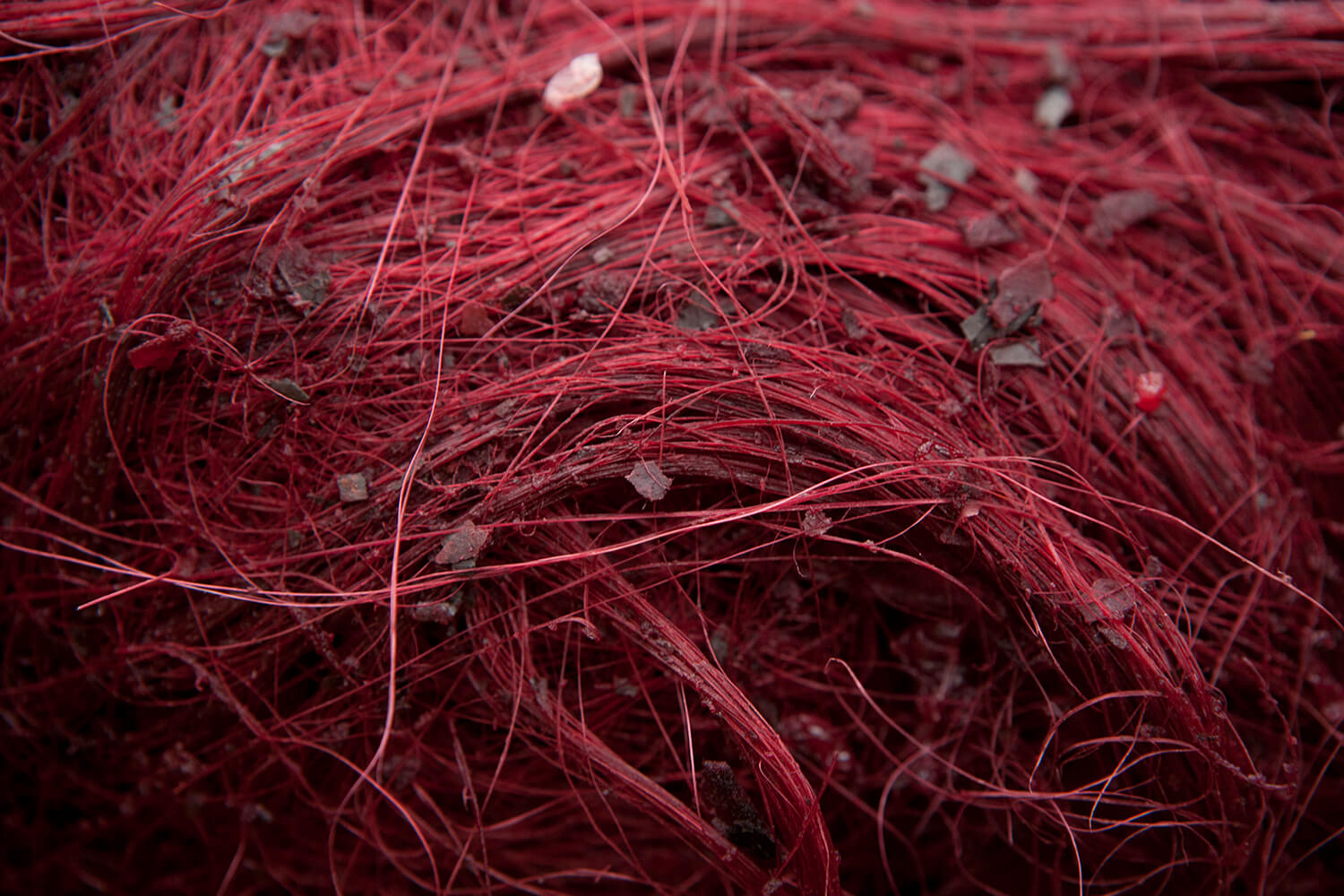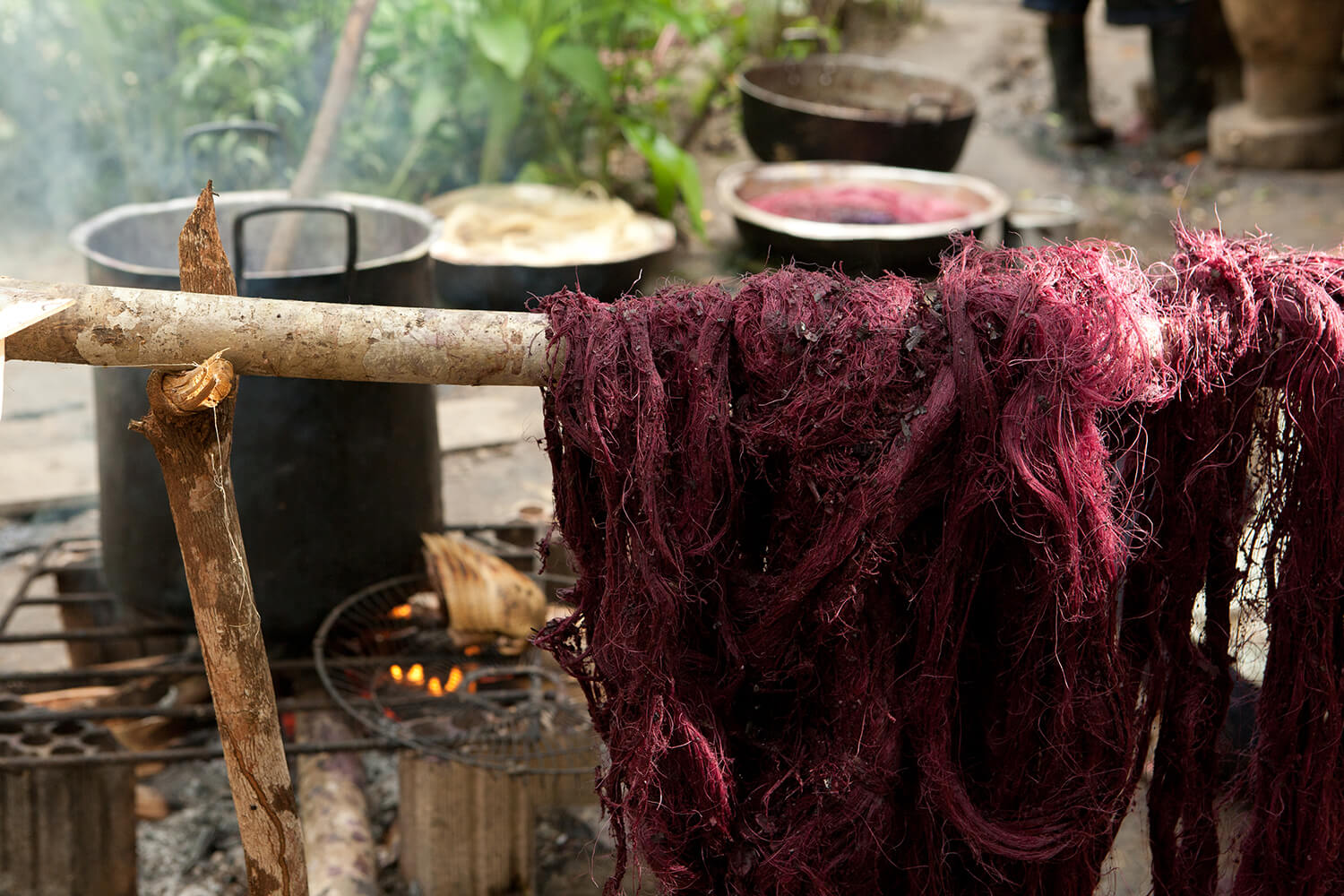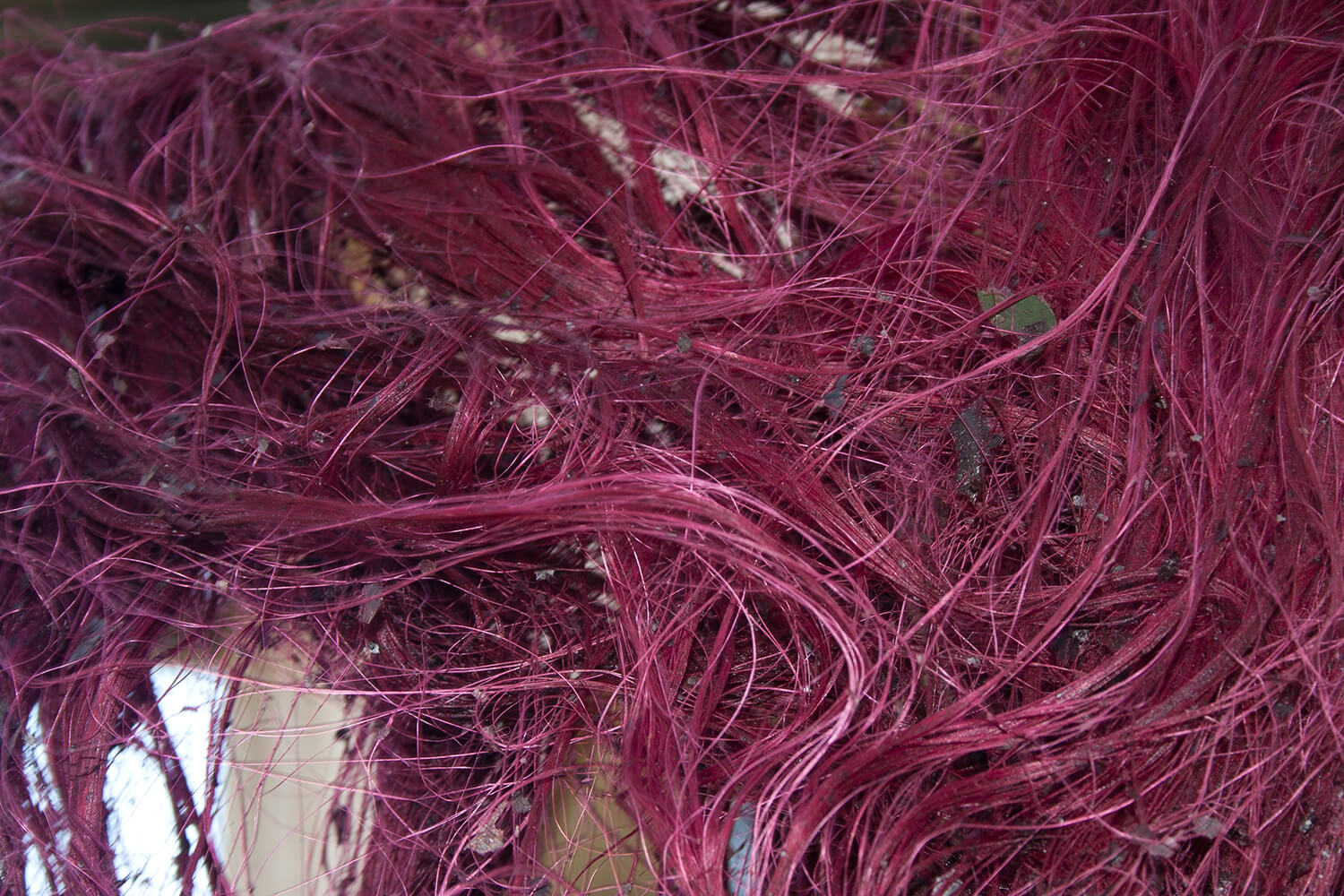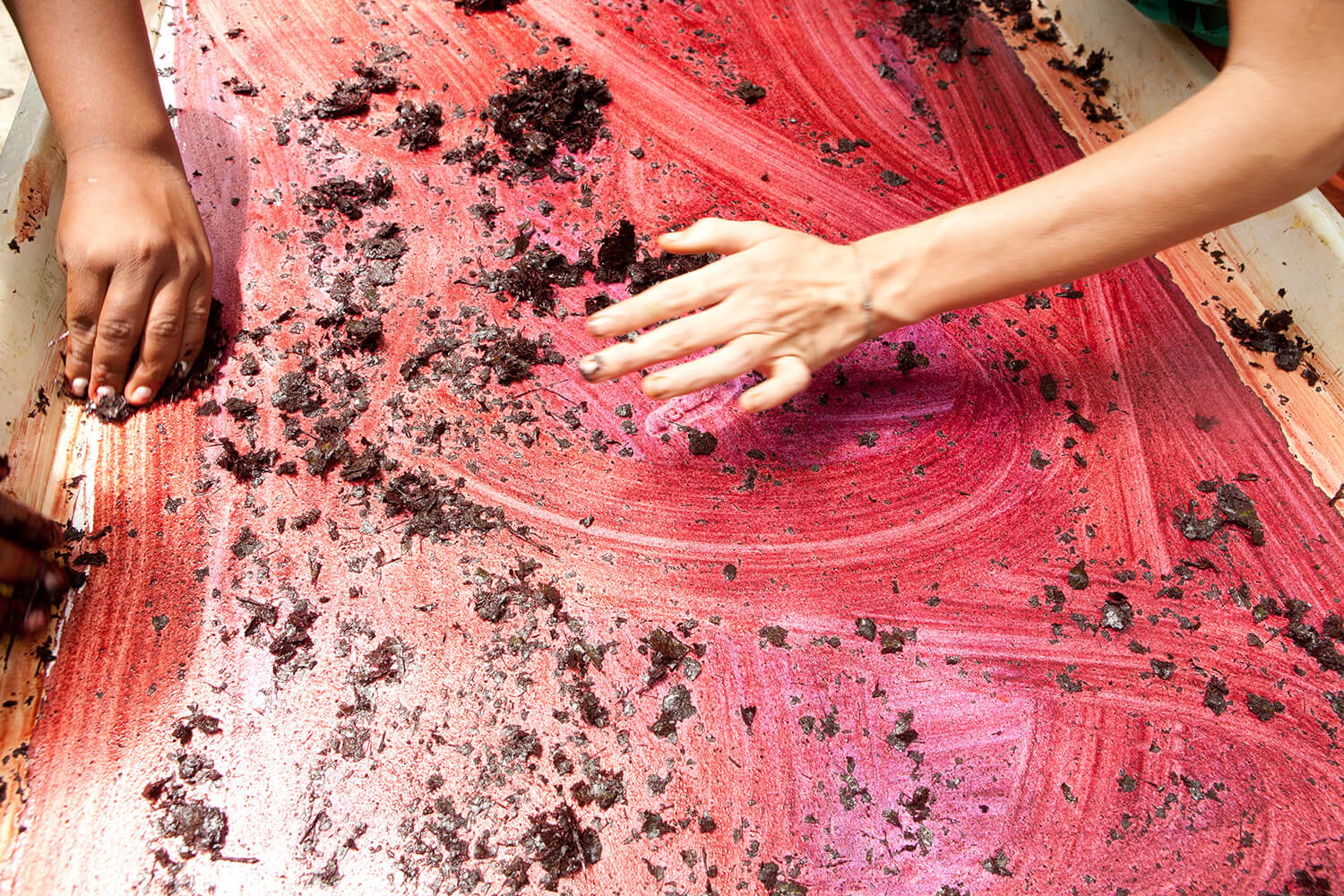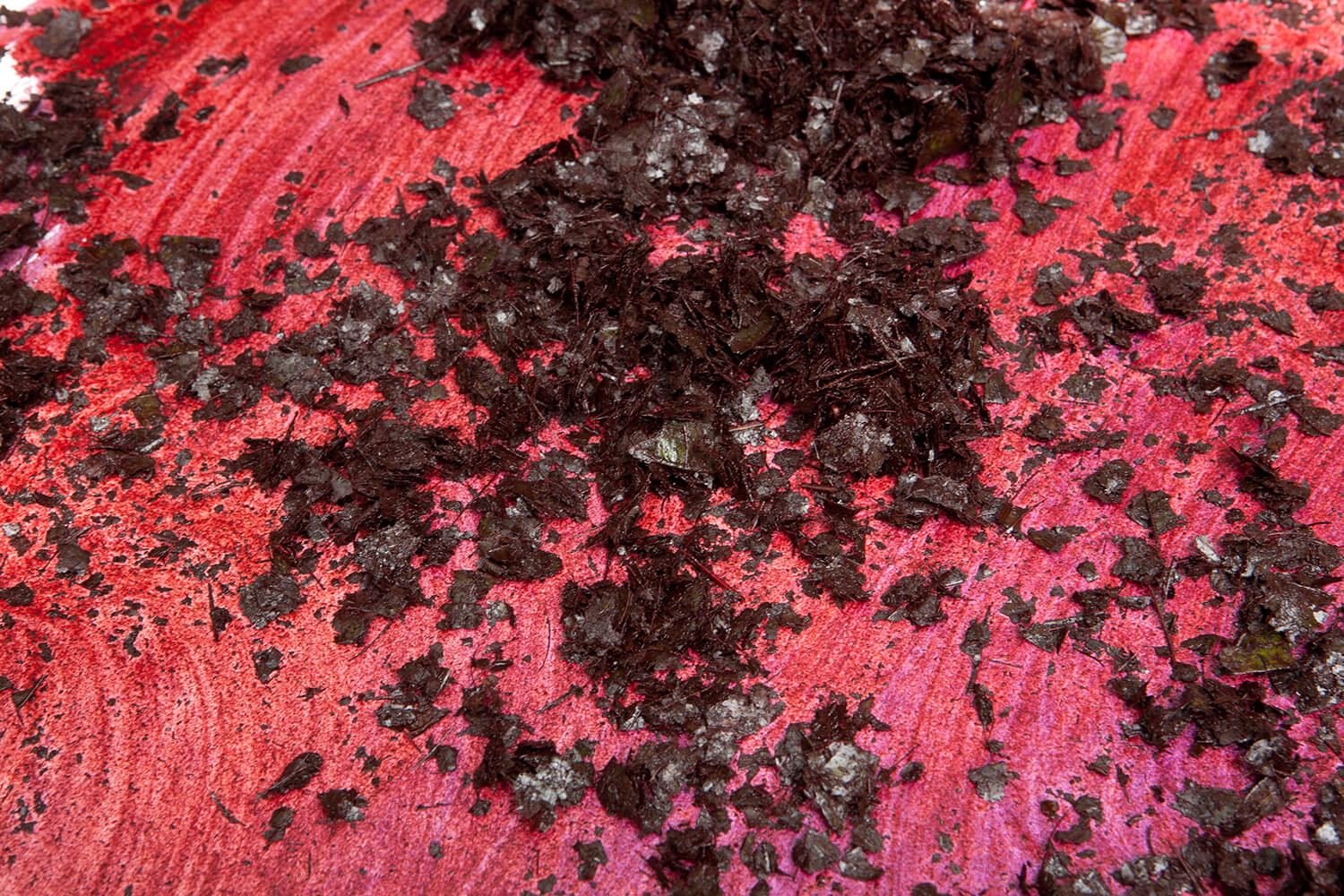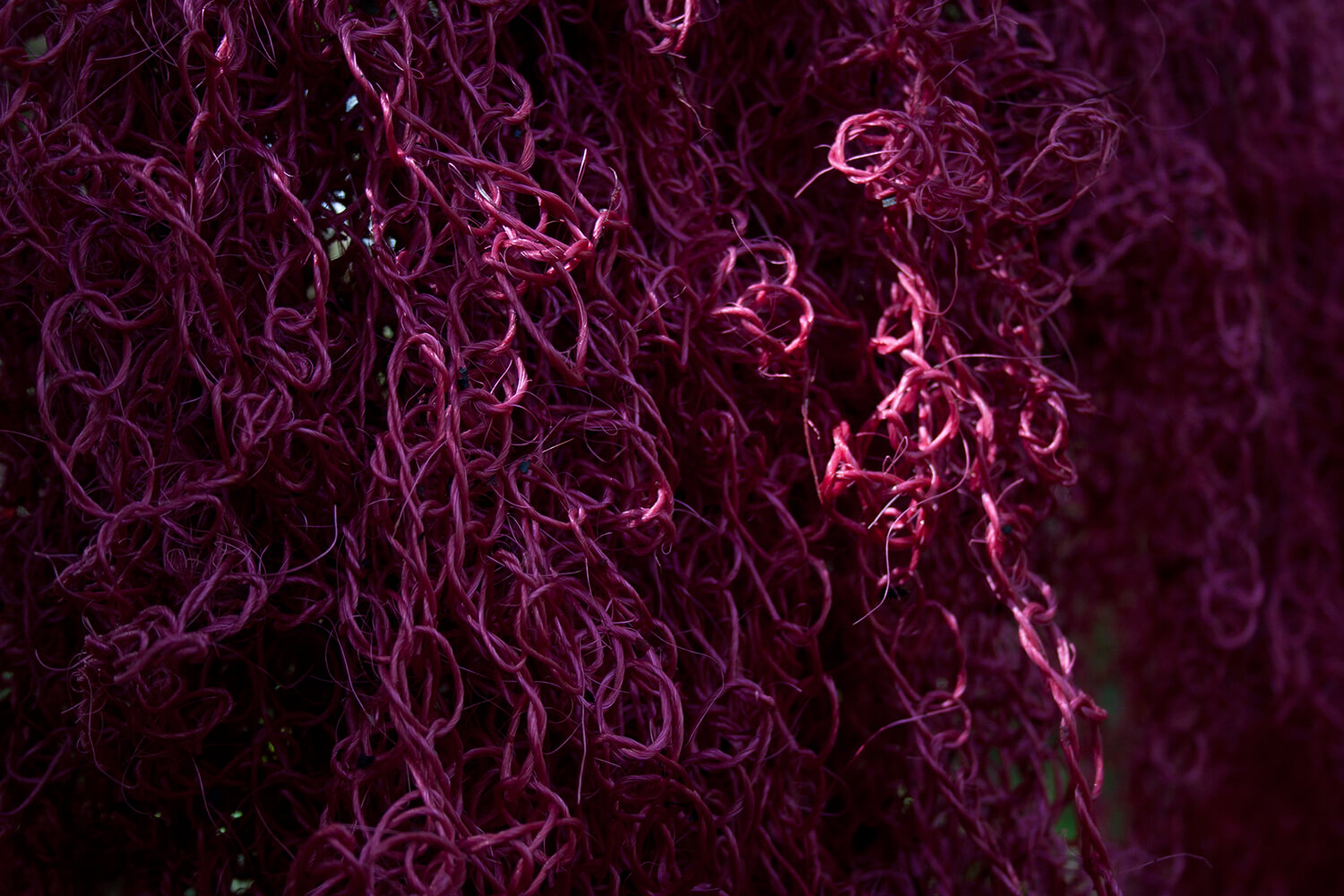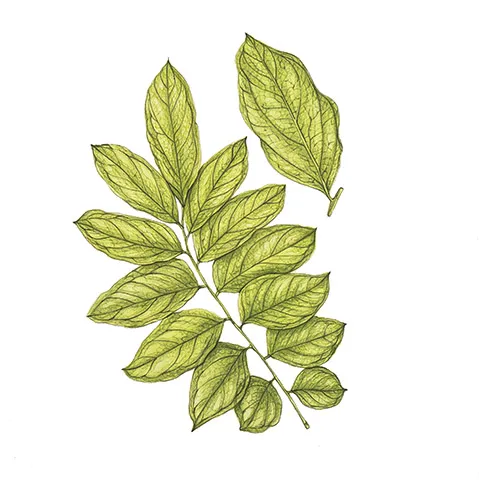
Chokanary
Picramnia sellowii
Order: Picramniales
Family: Picramniaceae
Genus: Picramnia
Species: Sellowii
Common names: Chokanari, morado, nanantahue, pahaku, sam panga.
Part of the plant used for pigment: Leaf
Color: Purple
Firing and dyeing process of natural fibers with chokanary pigment
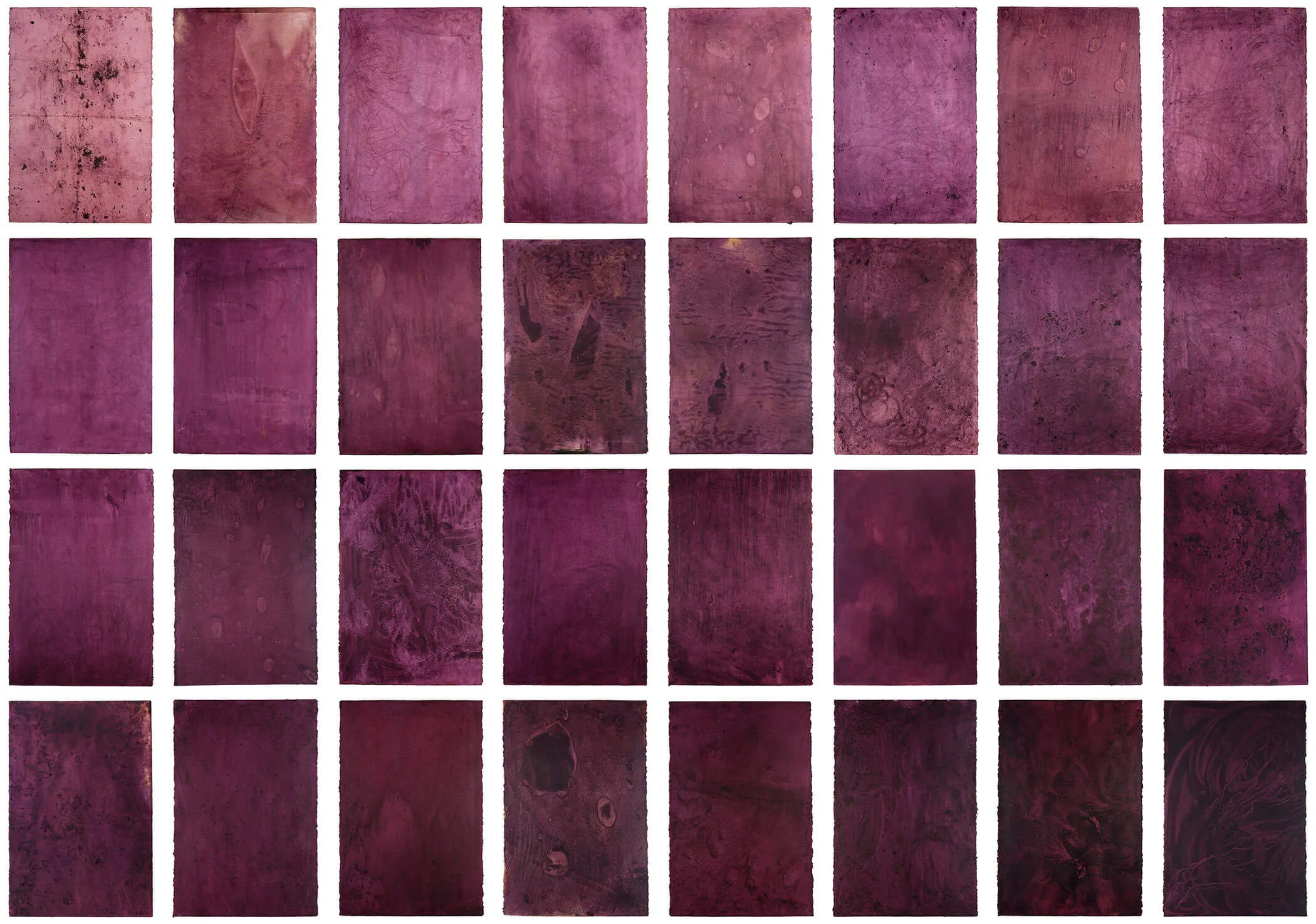
Chokanary pigment on paper. 102 x 68 cm
Planta
Chokanary. Leticia, Colombia, 2011.
General Description
Small tree that can grow up to eight meters in height. Its main trunk is narrow and the branches are thin with a crown of variable size. Its leaves are small and oval, with a smooth edge, and a bright green color when fresh, turning purplish-gray when dry. The flowers are white, small and clustered. Its fruits, red to black in color, are similar to the fruit of the coffee bush, and grow together in clusters.
Chokanary. Leticia, Colombia, 2011.
Geographic Distribution and Natural History
Although it is considered a native species of the Amazon basin, it is widely distributed in tropical America, from Florida to Argentina. It has been found in Mexico, in Loreto in Peru, the Yungas region in Bolivia, the Ecuadorian Amazon, the Colombian Amazon, Paraguay, and Brazil. Although it is a tree from hot regions, it grows best in the shade.
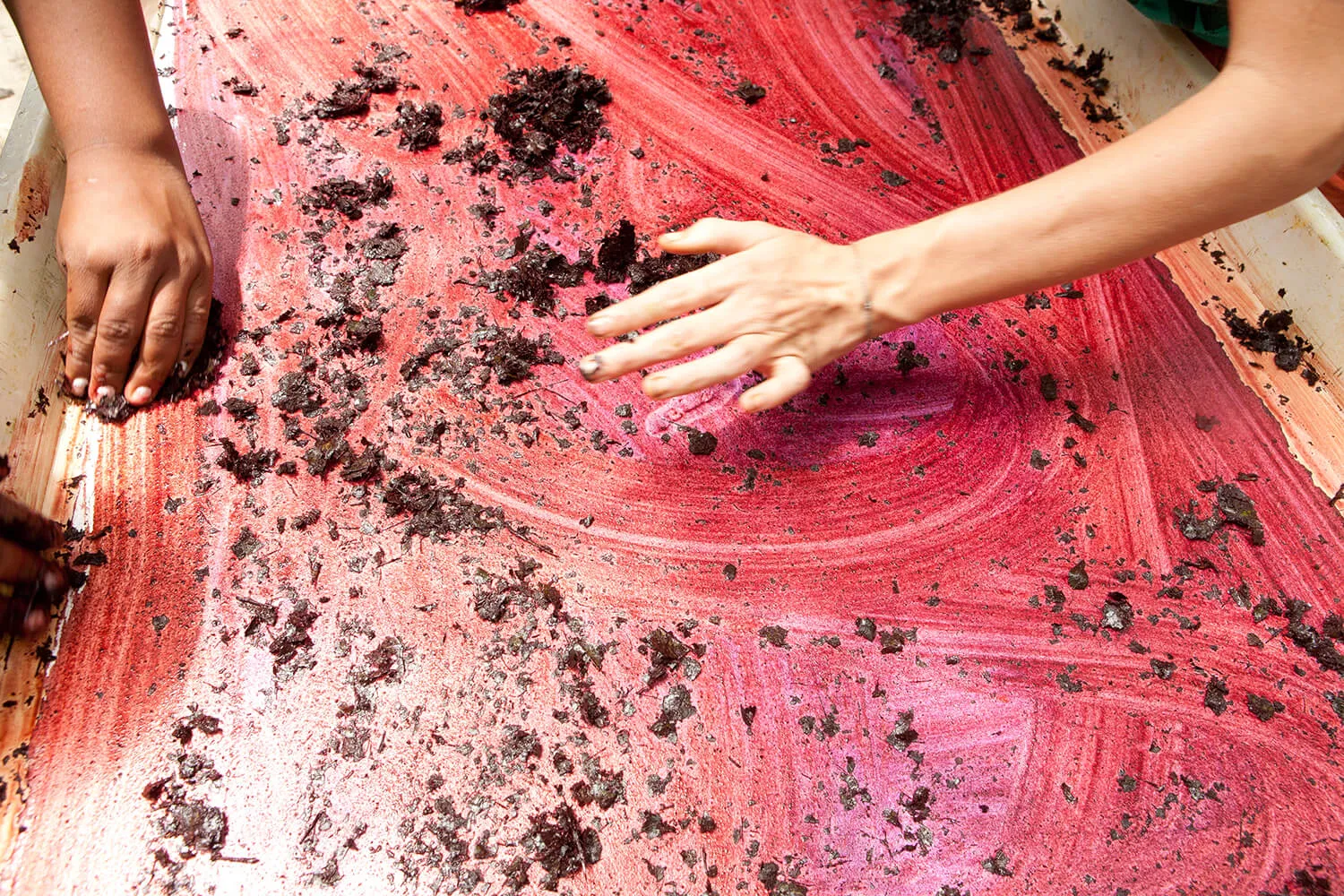
Chokanary mixed with water. Leticia, Colombia, 2011
Uses
In the Nangaritza Valley in southern Ecuador, the Shuar make compresses with its leaves to treat wounds. Similarly, the Moseten in the Bolivian Amazon use them to treat skin conditions. The branches, leaves and fruits produce a purple dye. Different shades of violet are obtained from the leaves, which are highly appreciated by the indigenous people of the Sierra Nevada de Santa Marta, who call it unna. Indigenous communities in the Amazon use it to dye natural fibers, paint fabrics, and decorate homes. In the Colombian Pacific its wood is used to build boats and houses.
Pigment
The chokanary produces a purple dye that is extracted after macerating its leaves. This is a very rare species, providing attractive dyes given the intensity of its purple and the excellent adhesion on paper, fique and cotton. It is a versatile pigment, since it turns brownish-red when exposed to fire. In this case, however, the color was applied without exposure to heat.
Extracción + teñido

